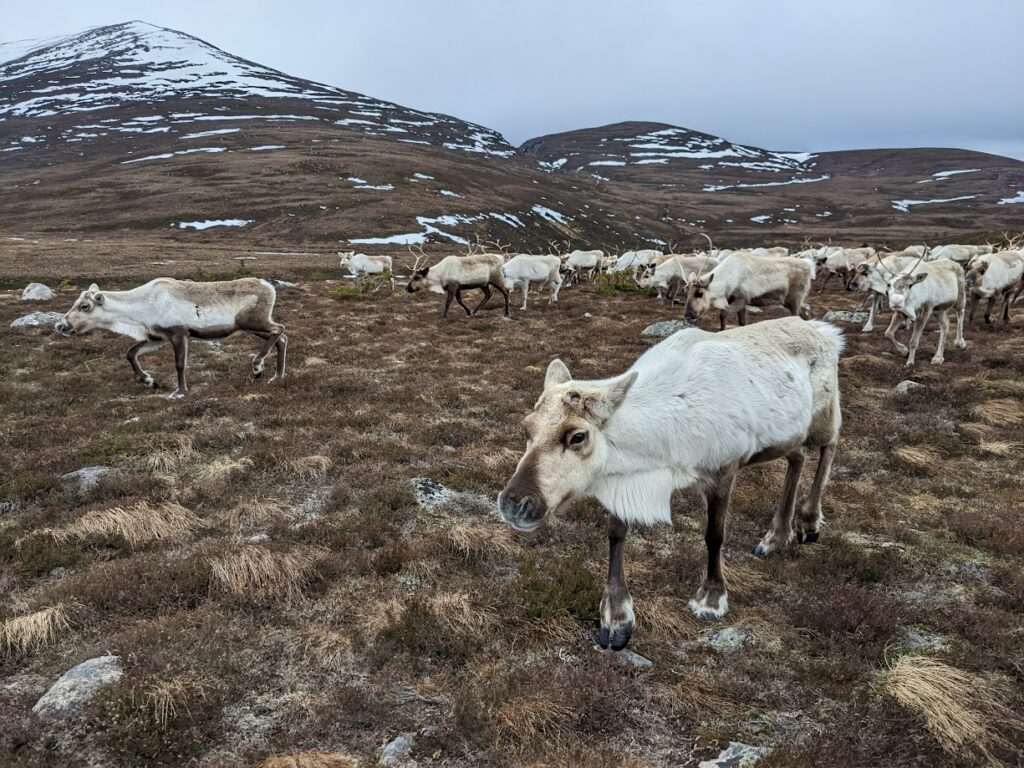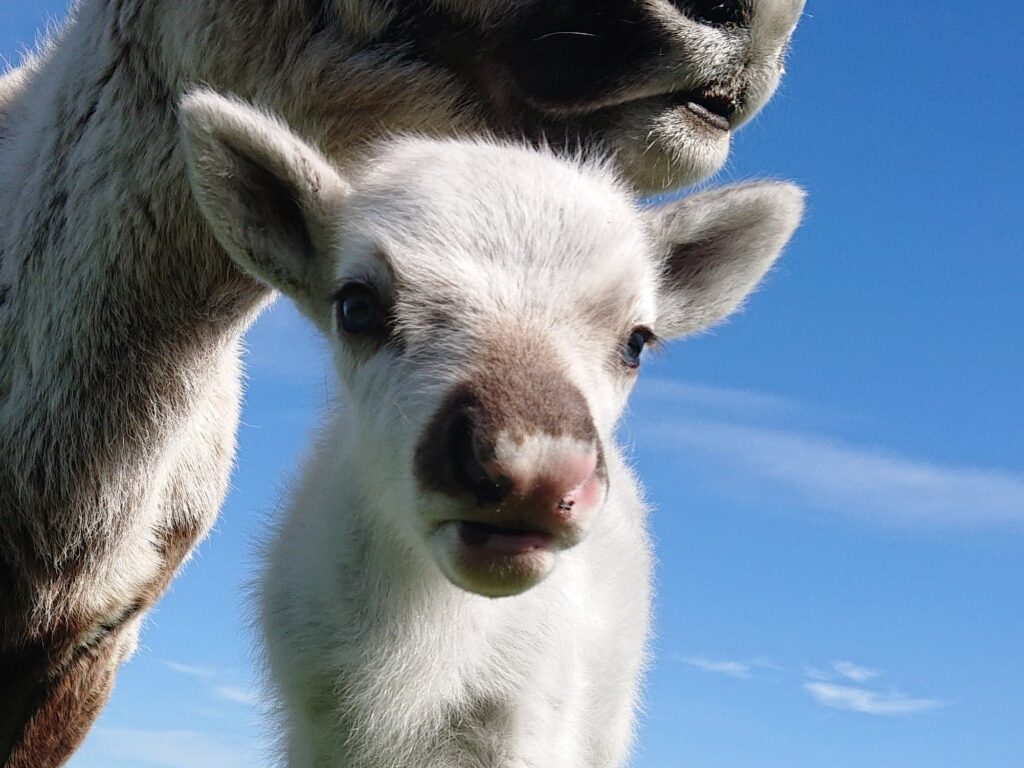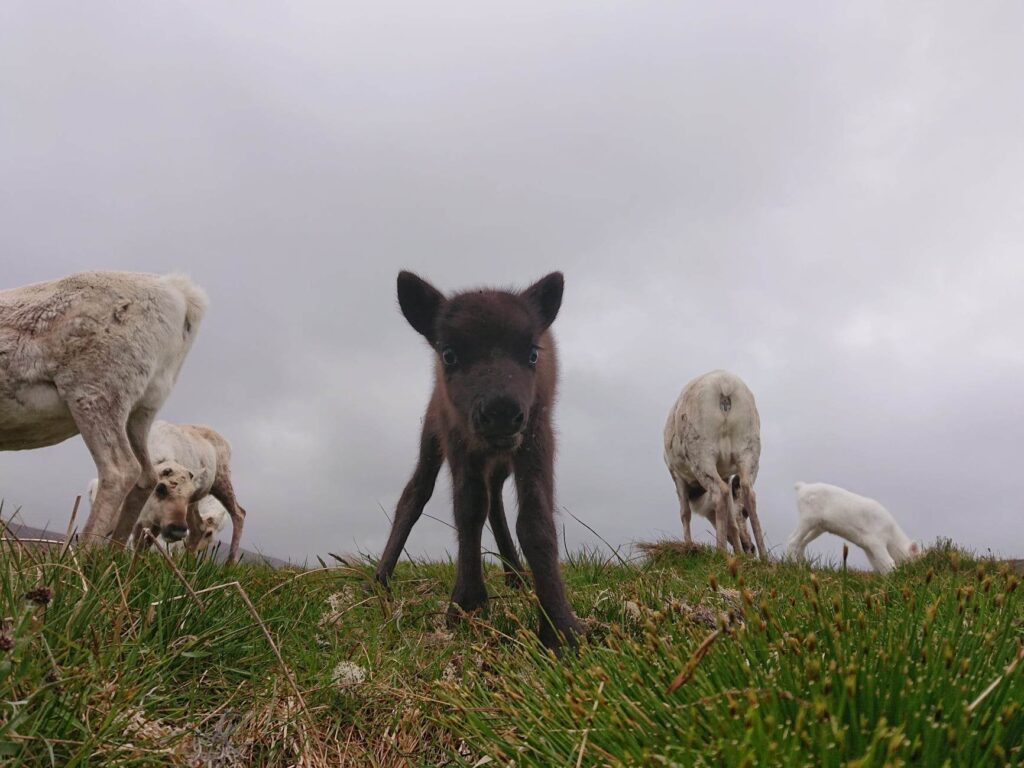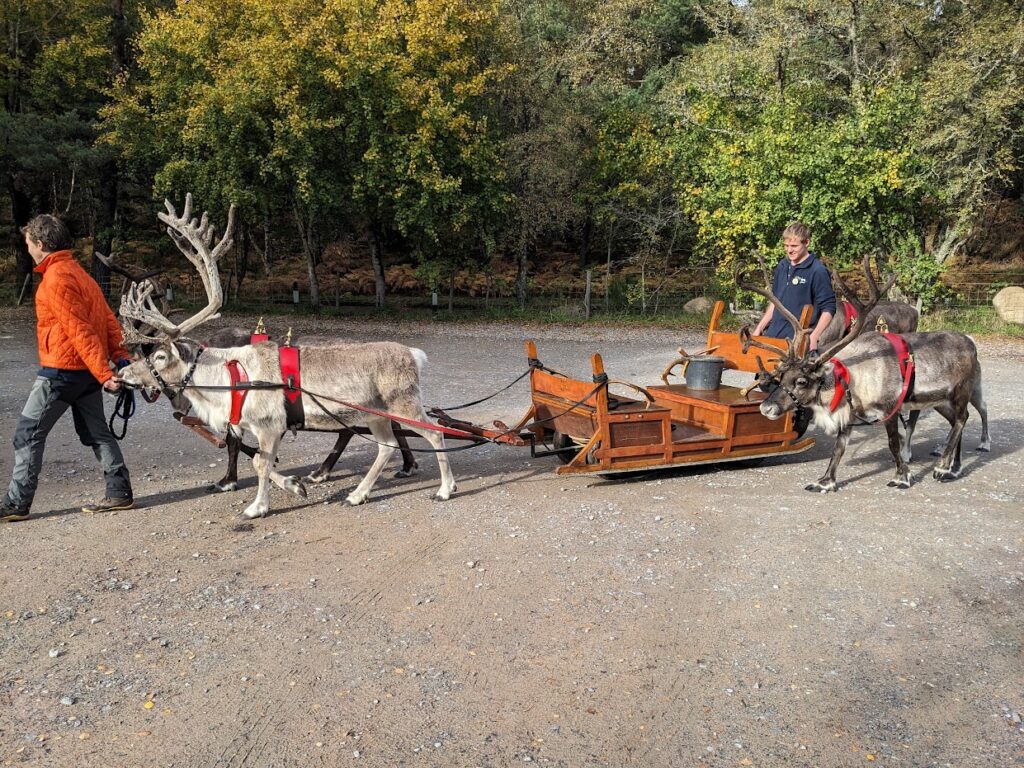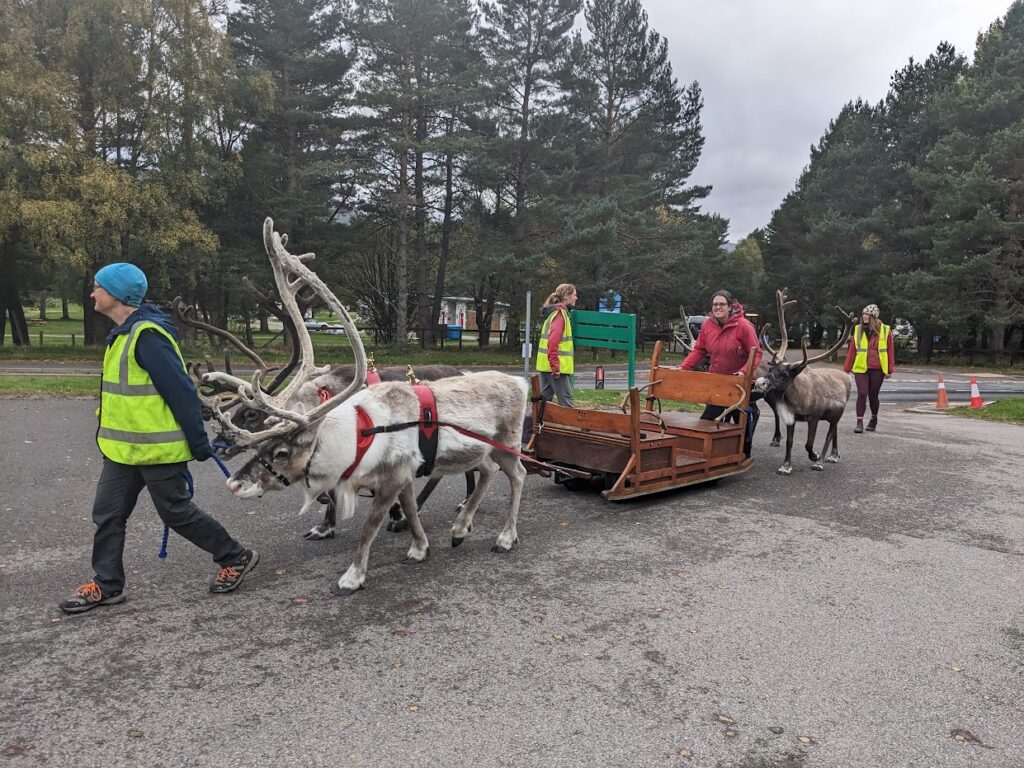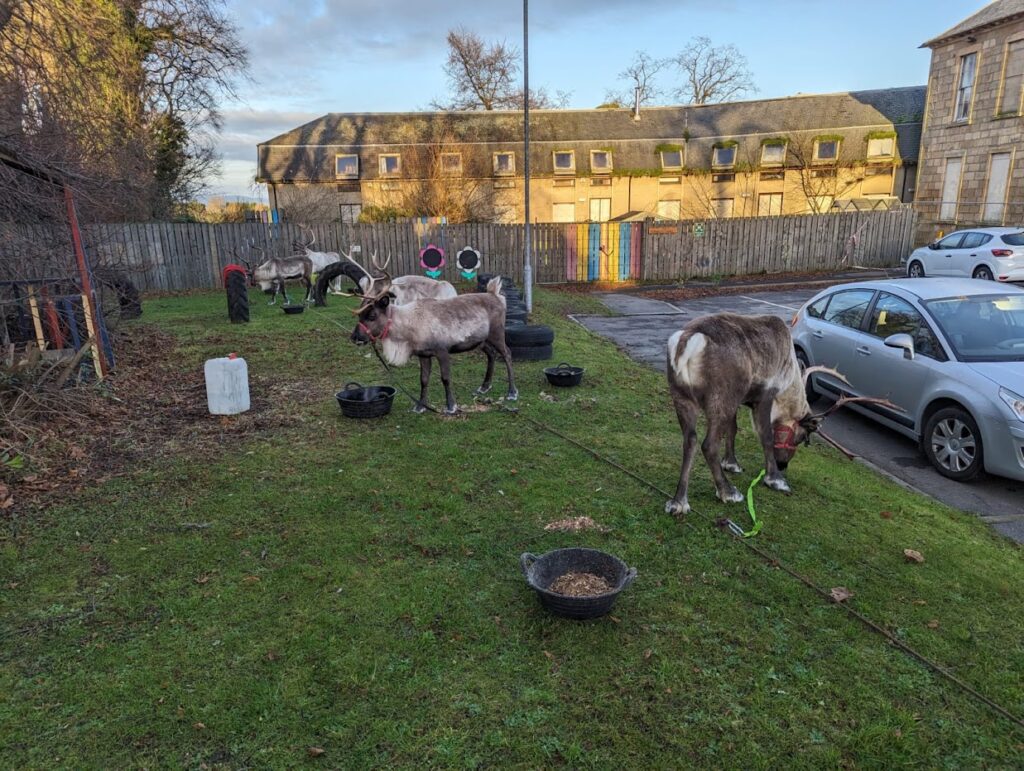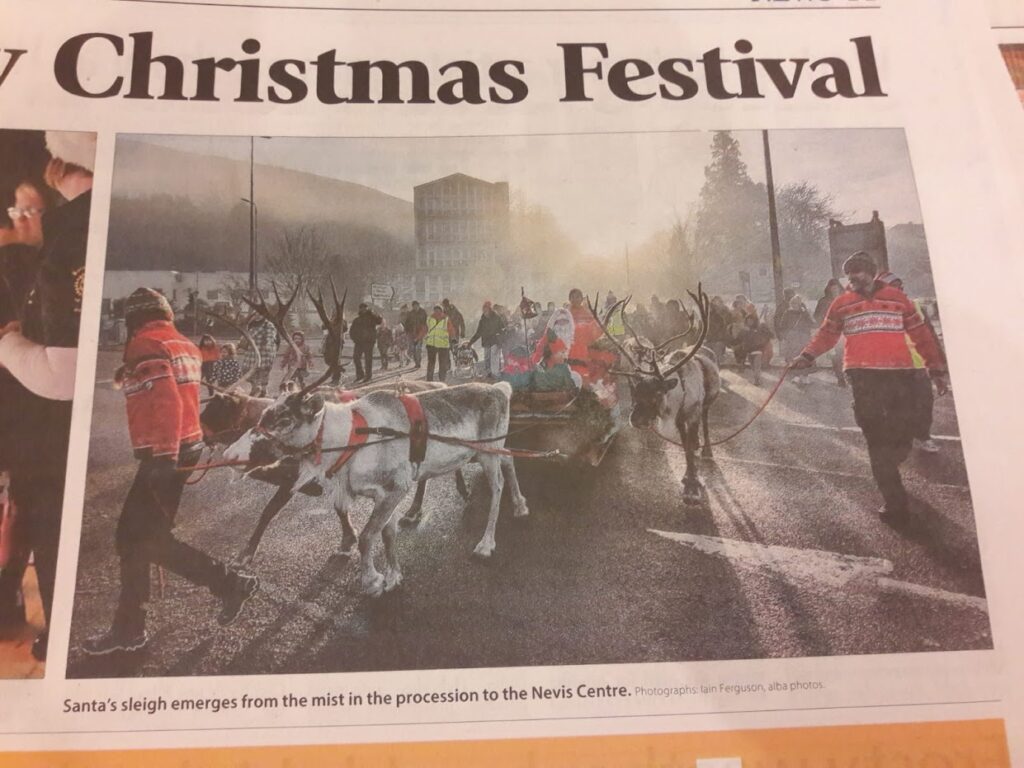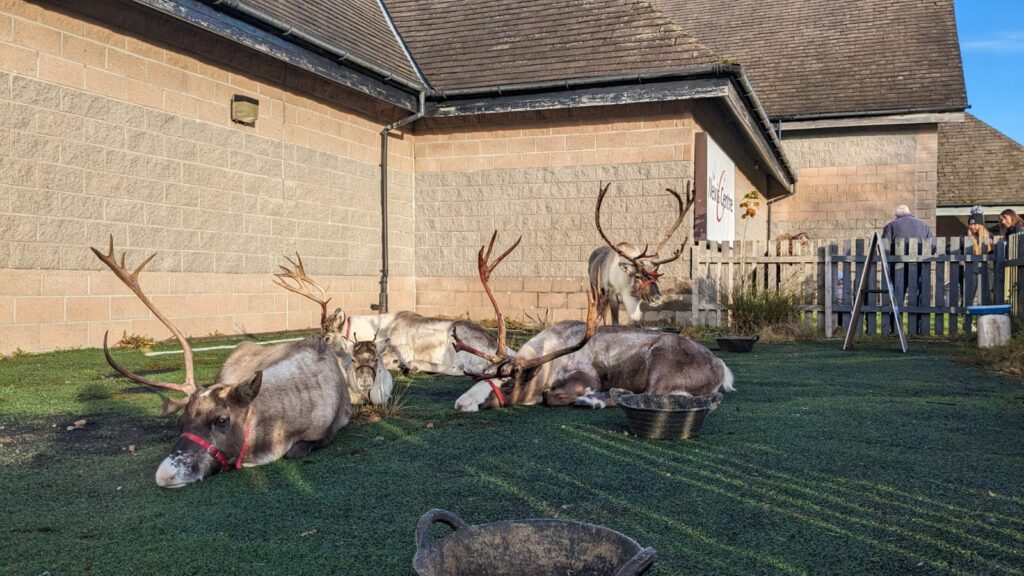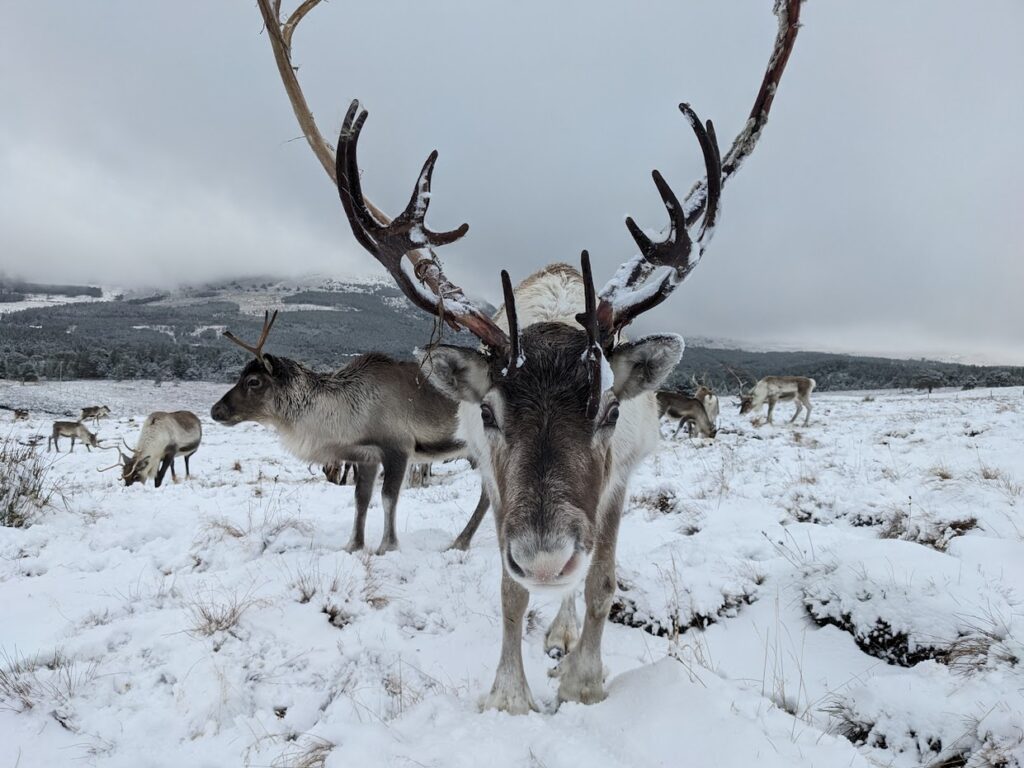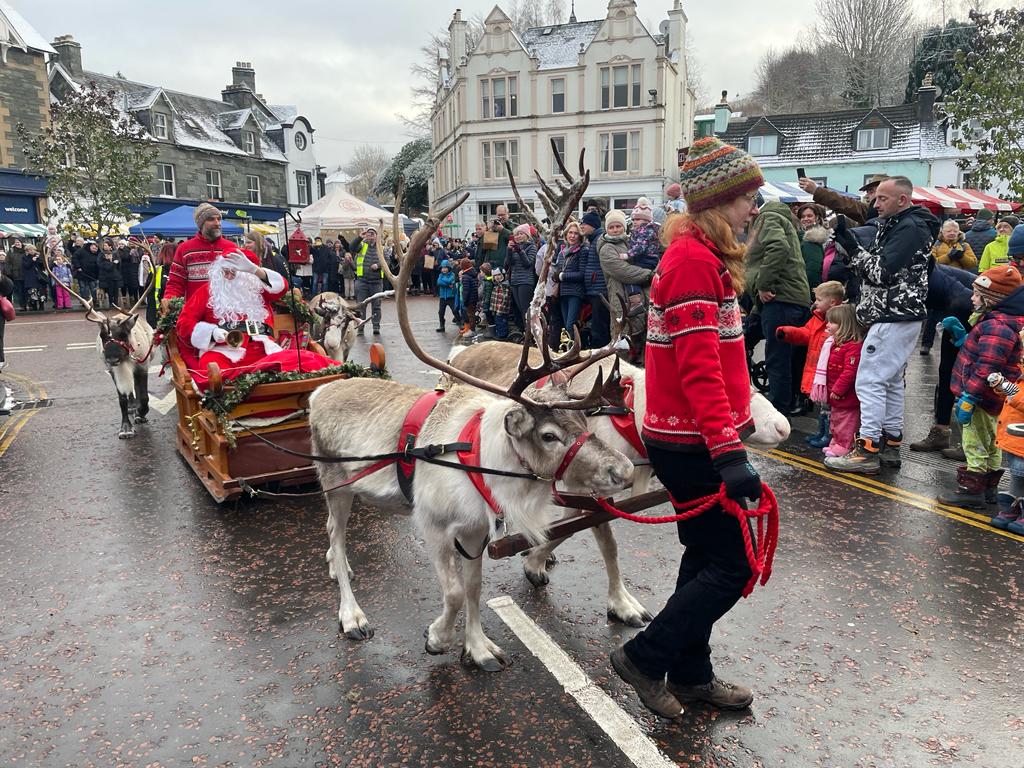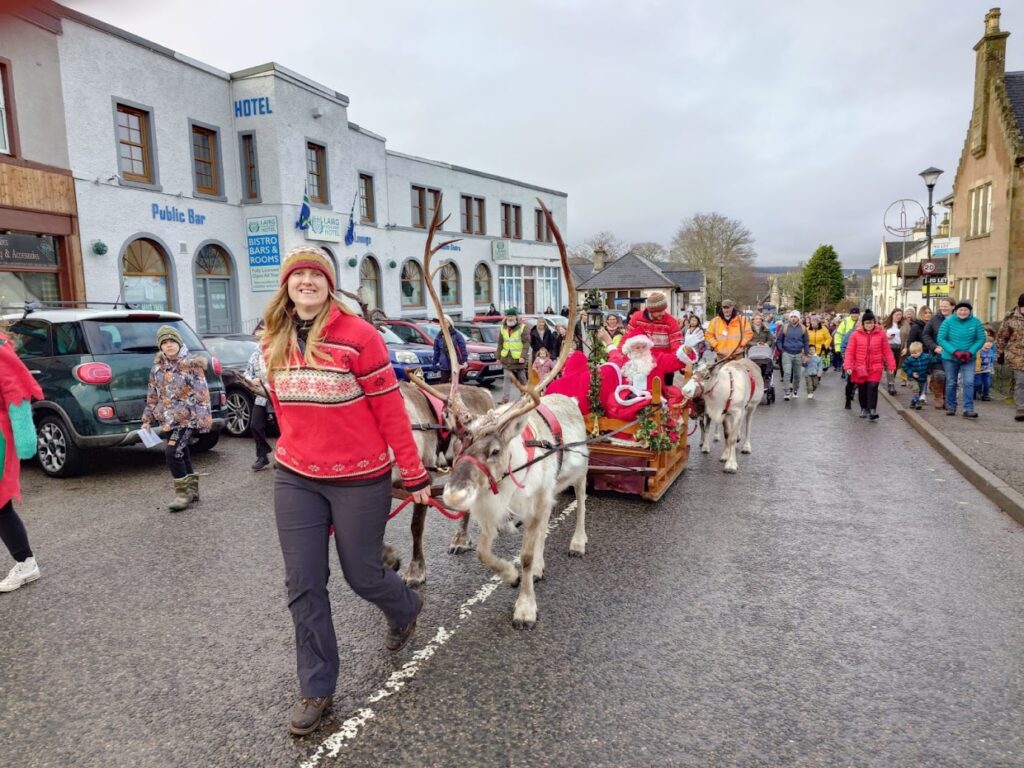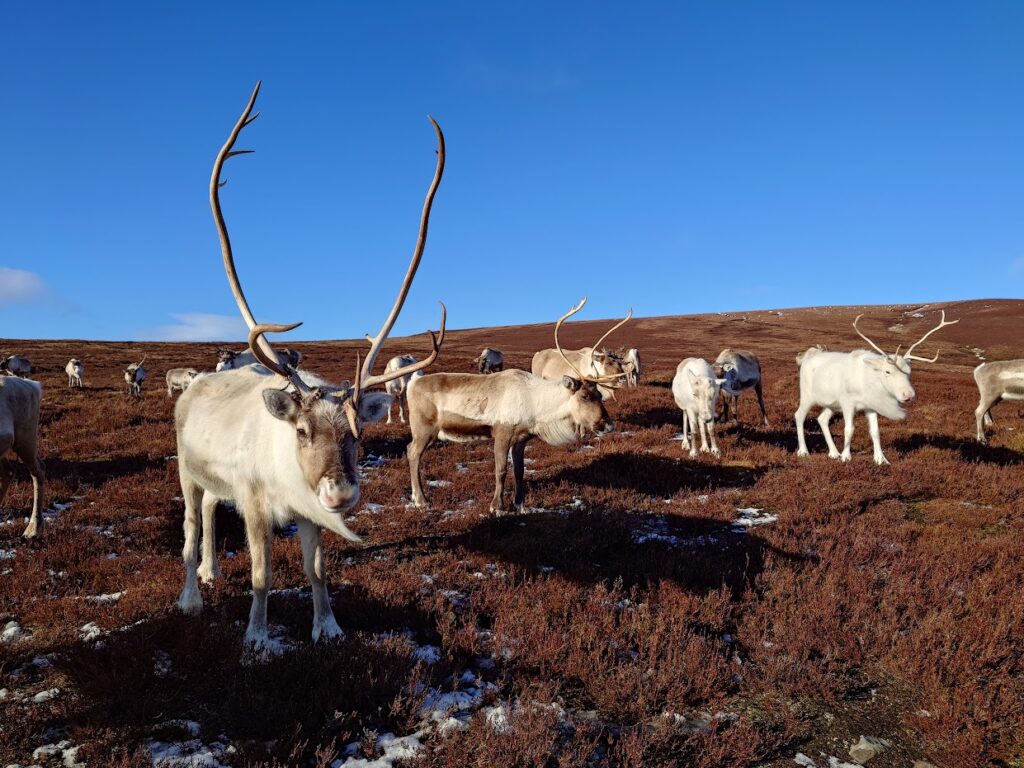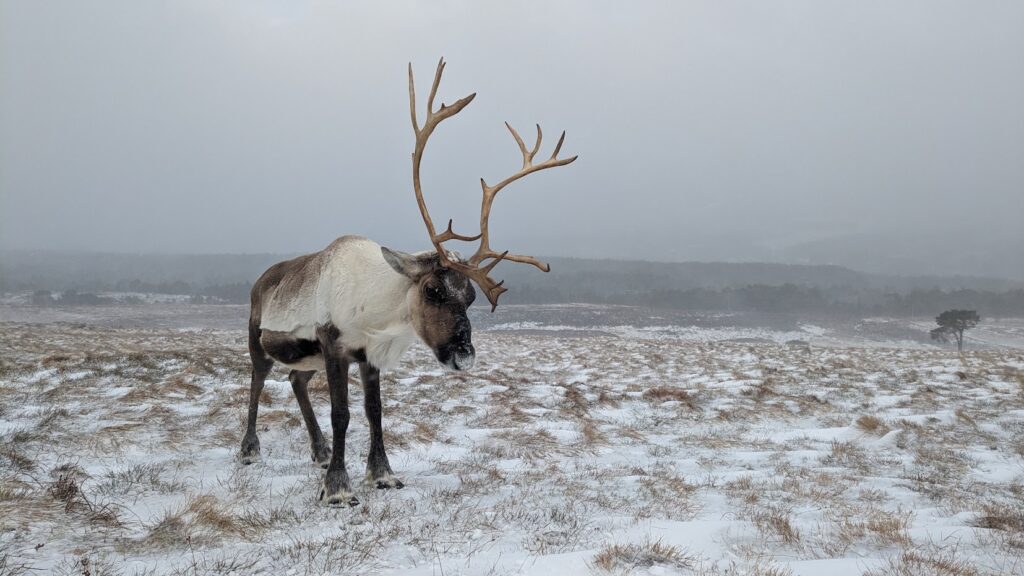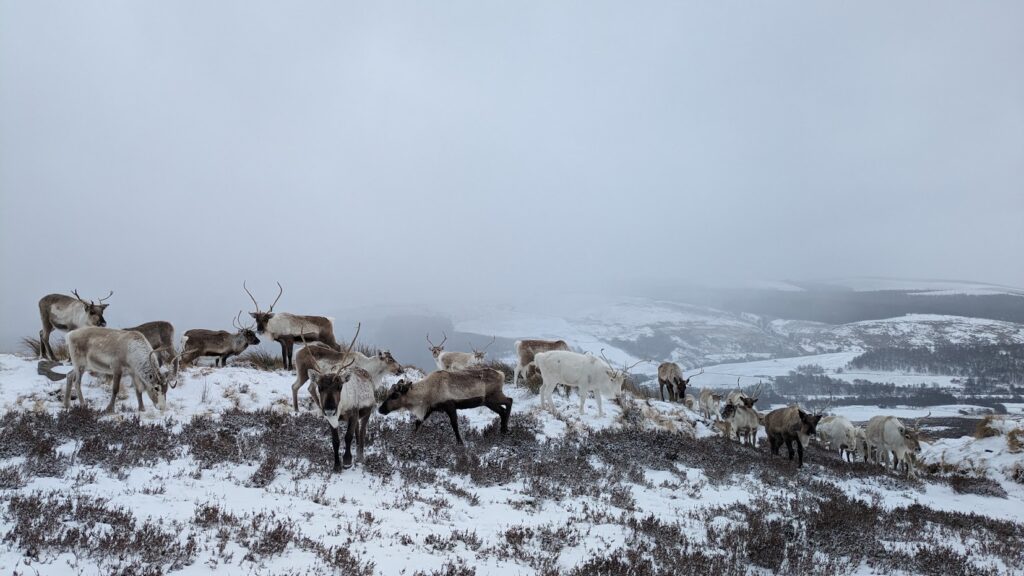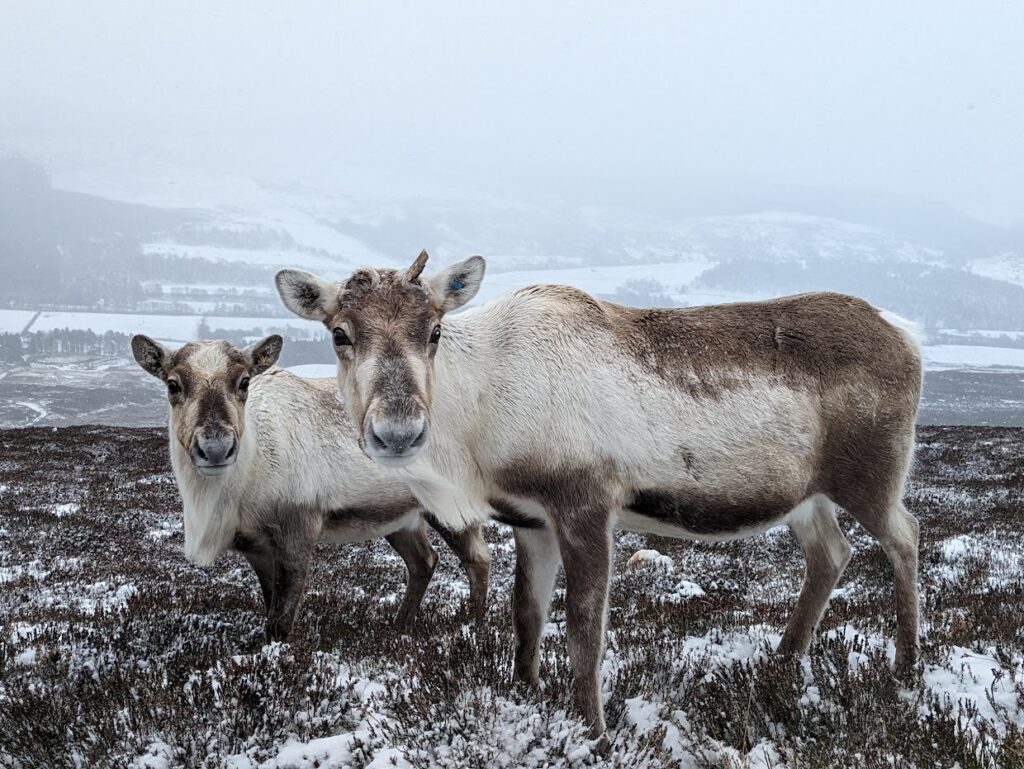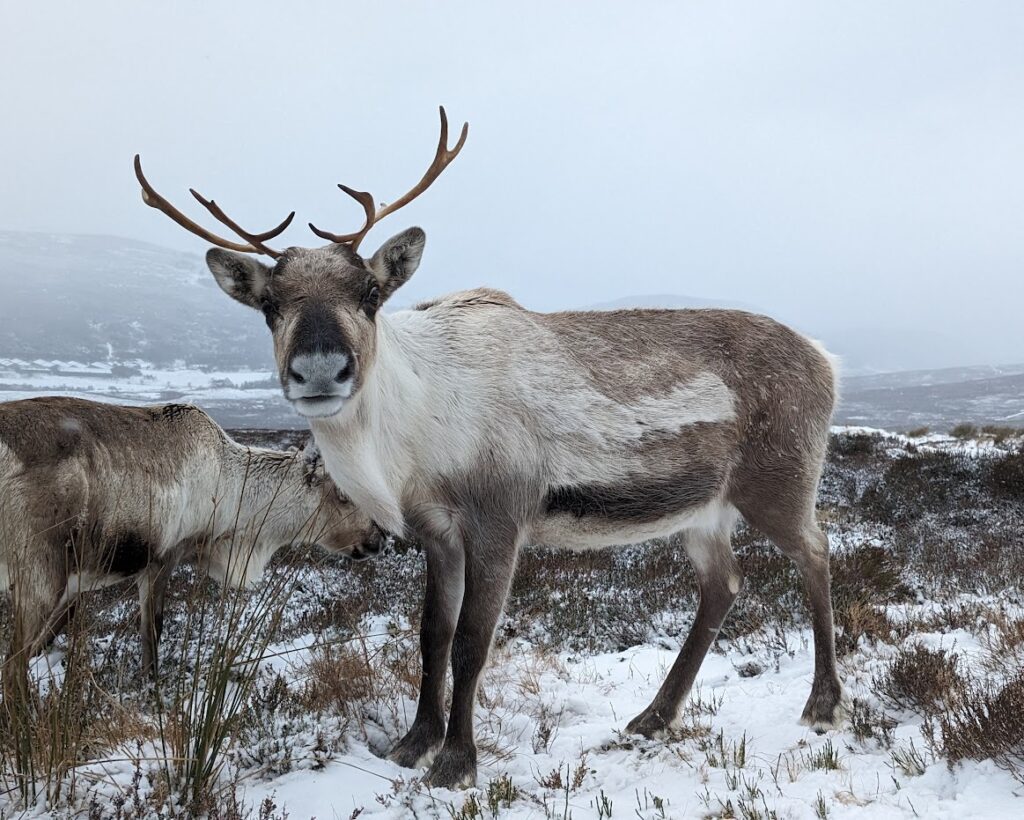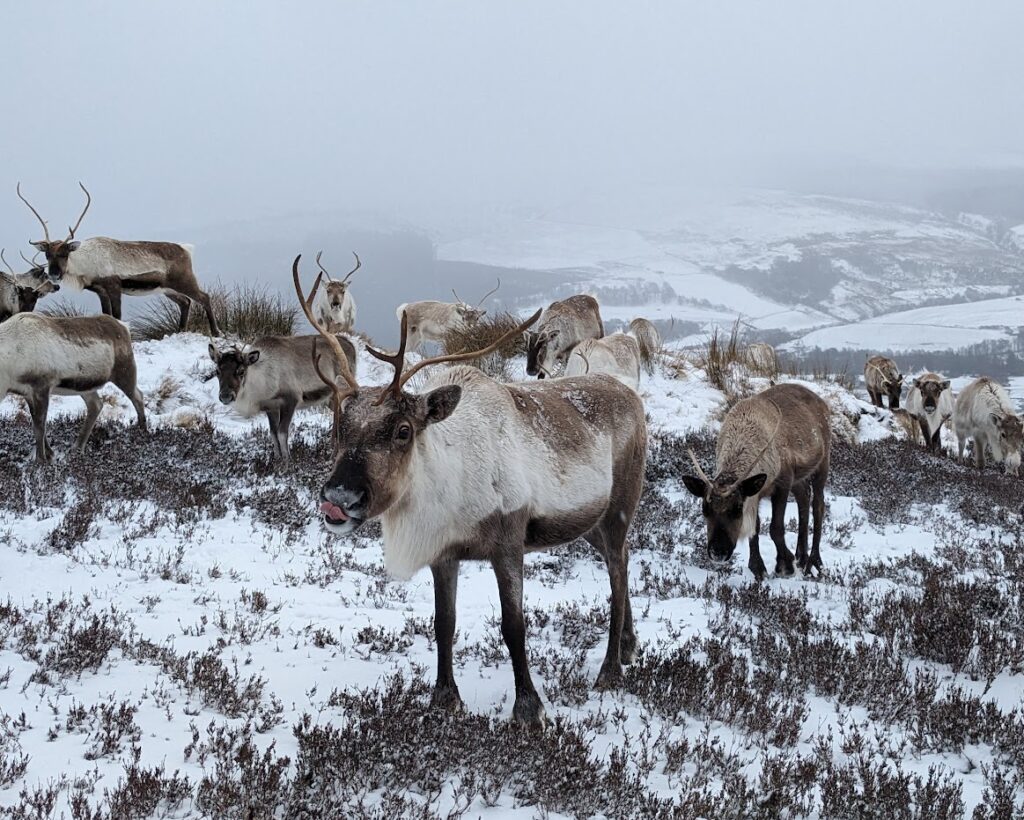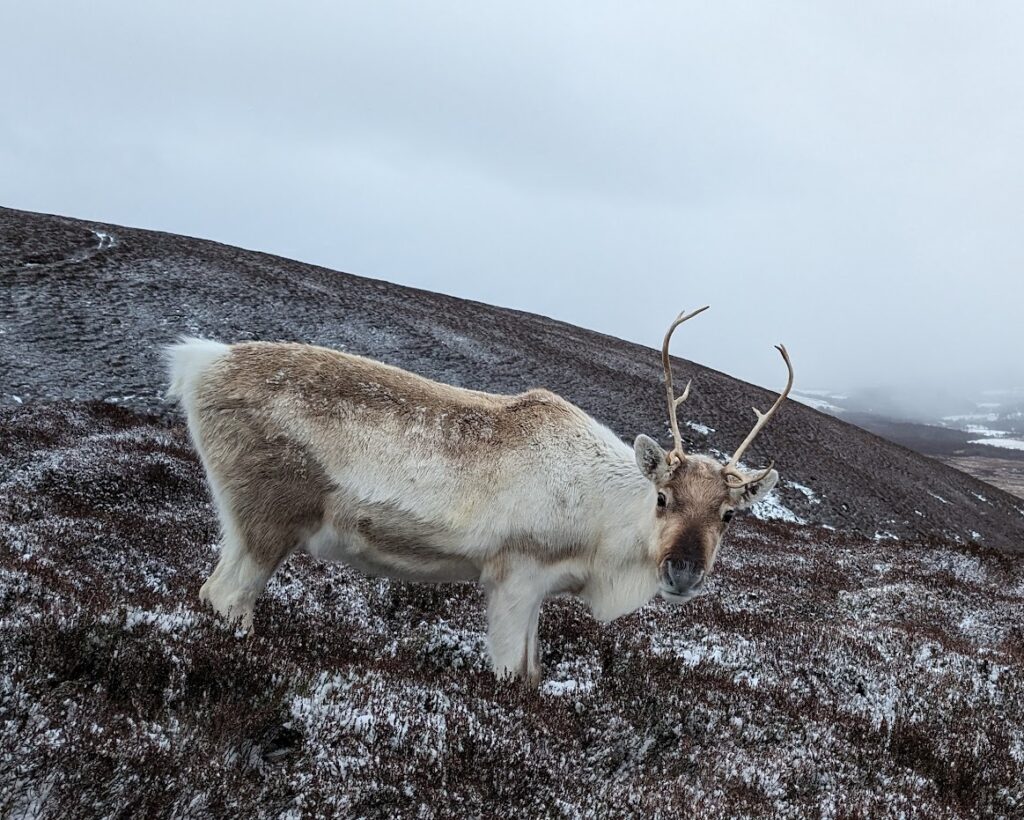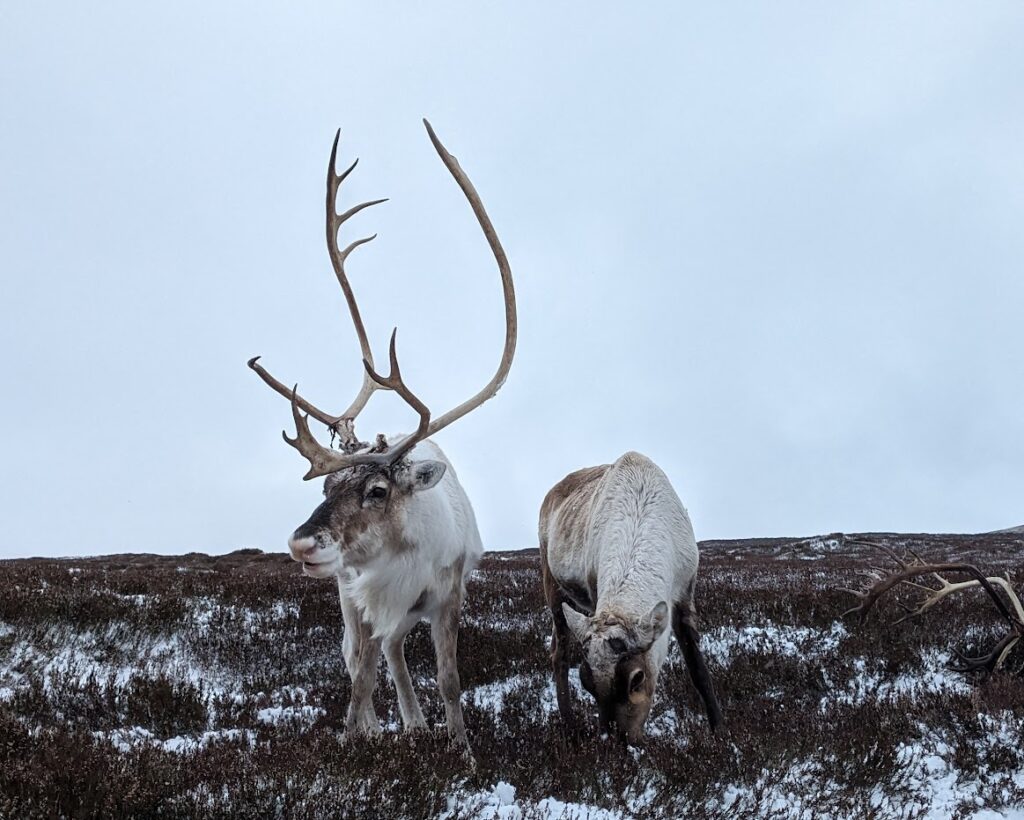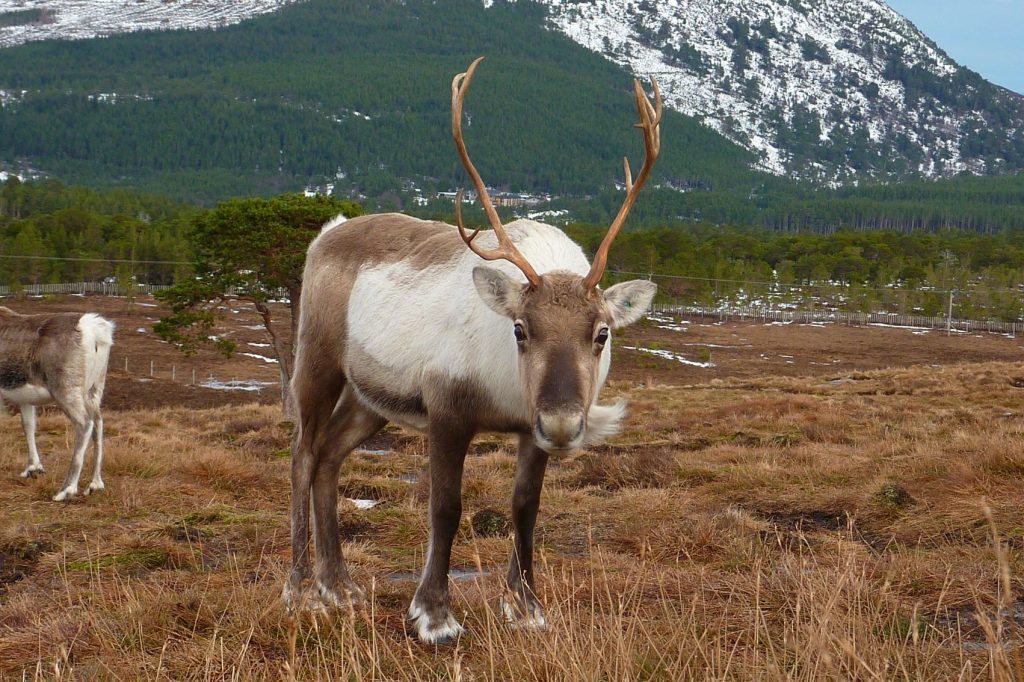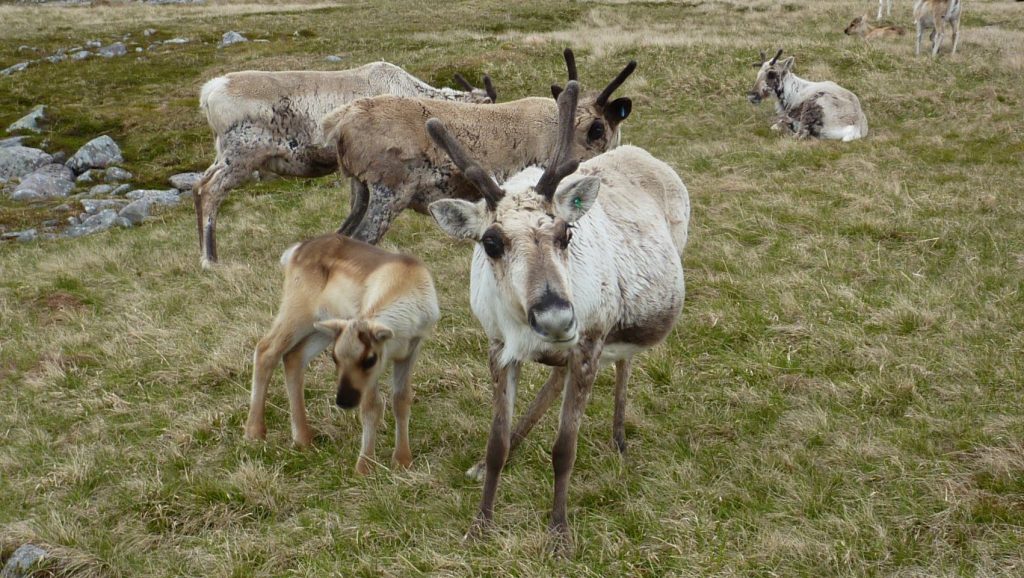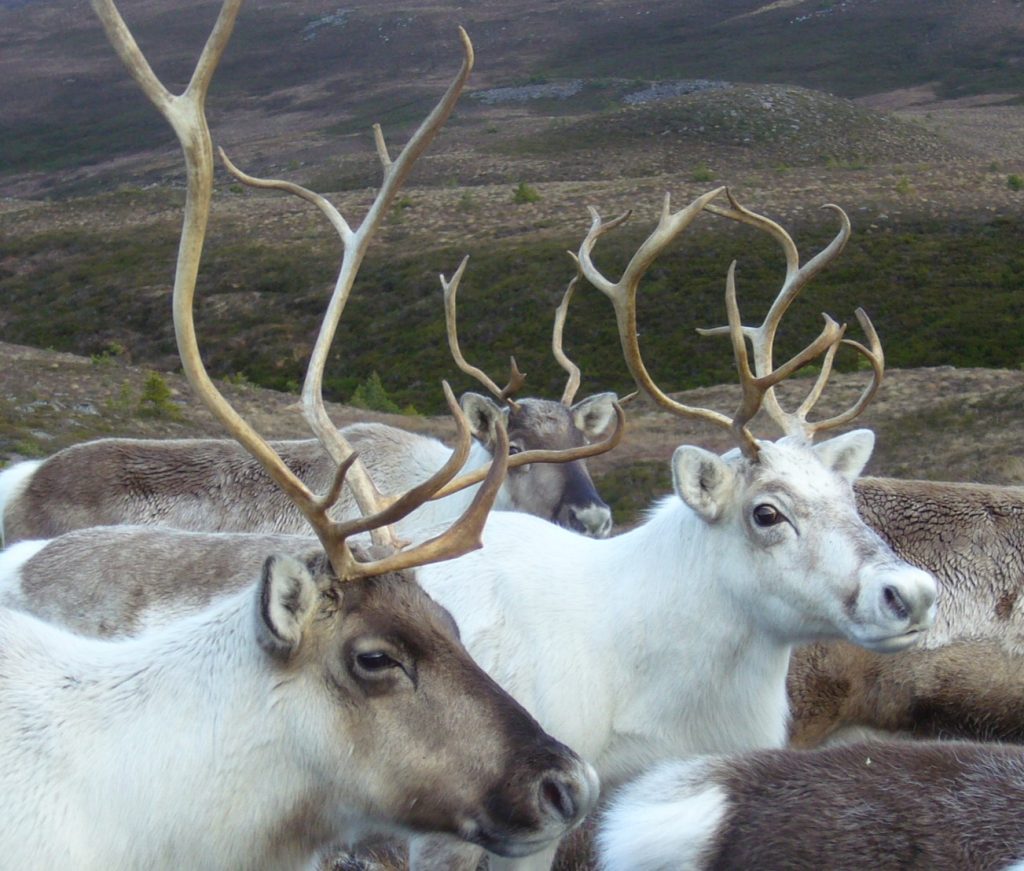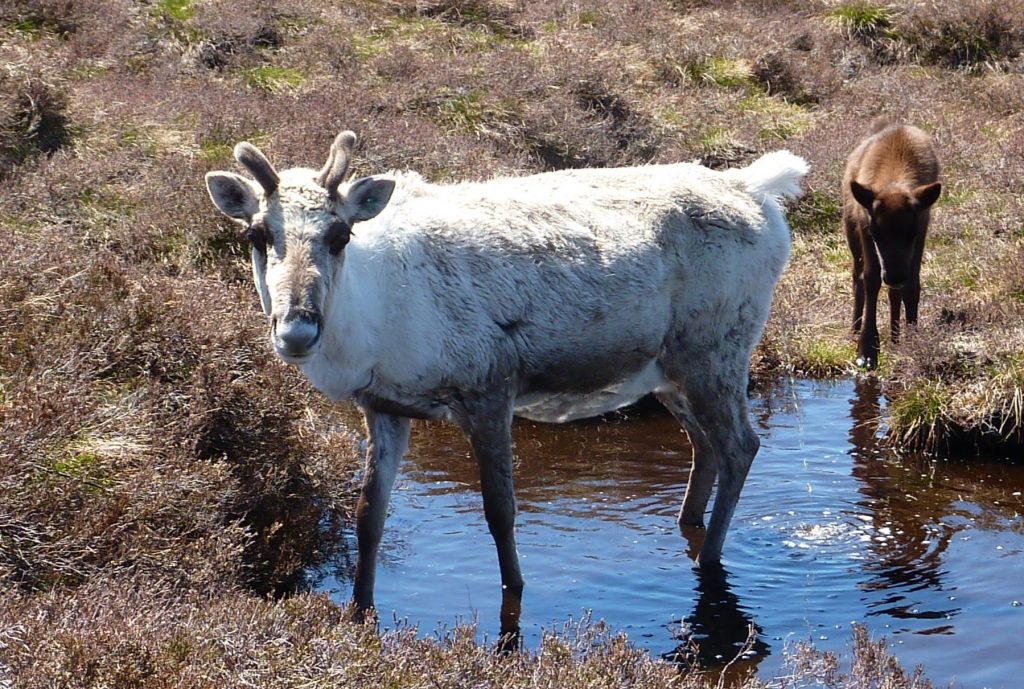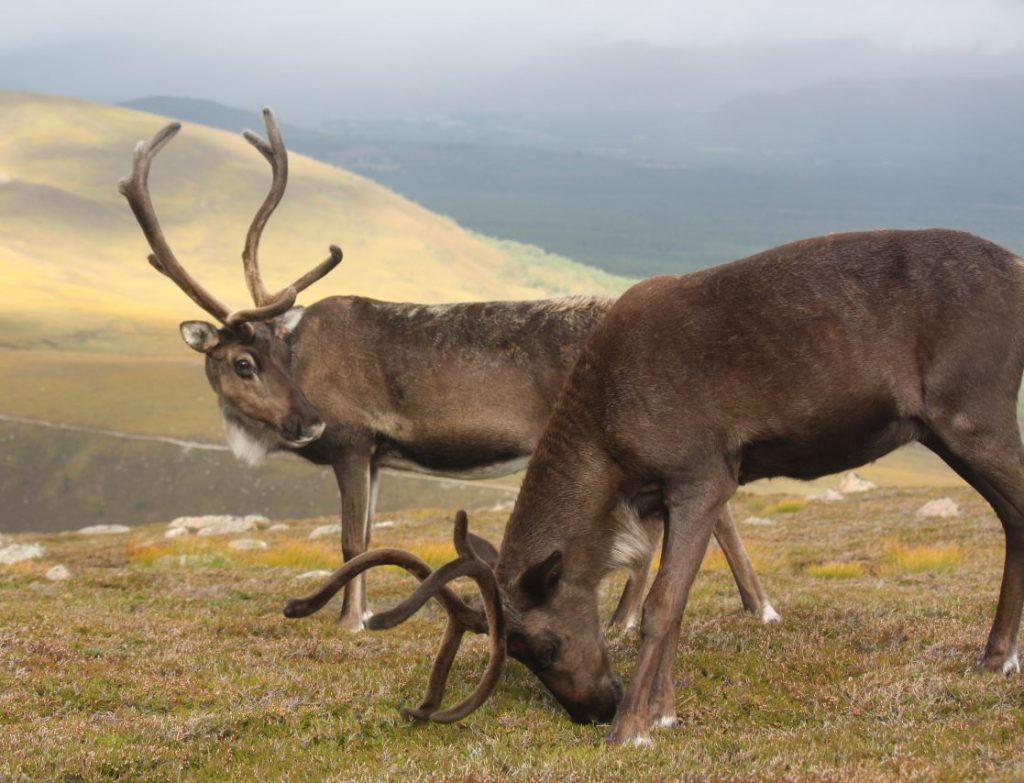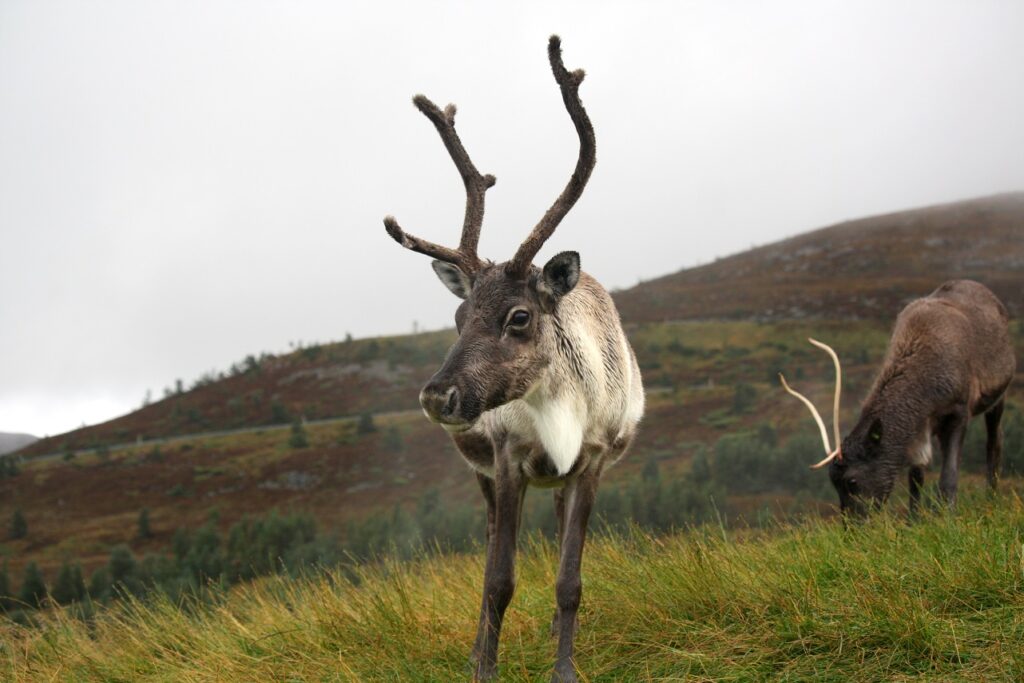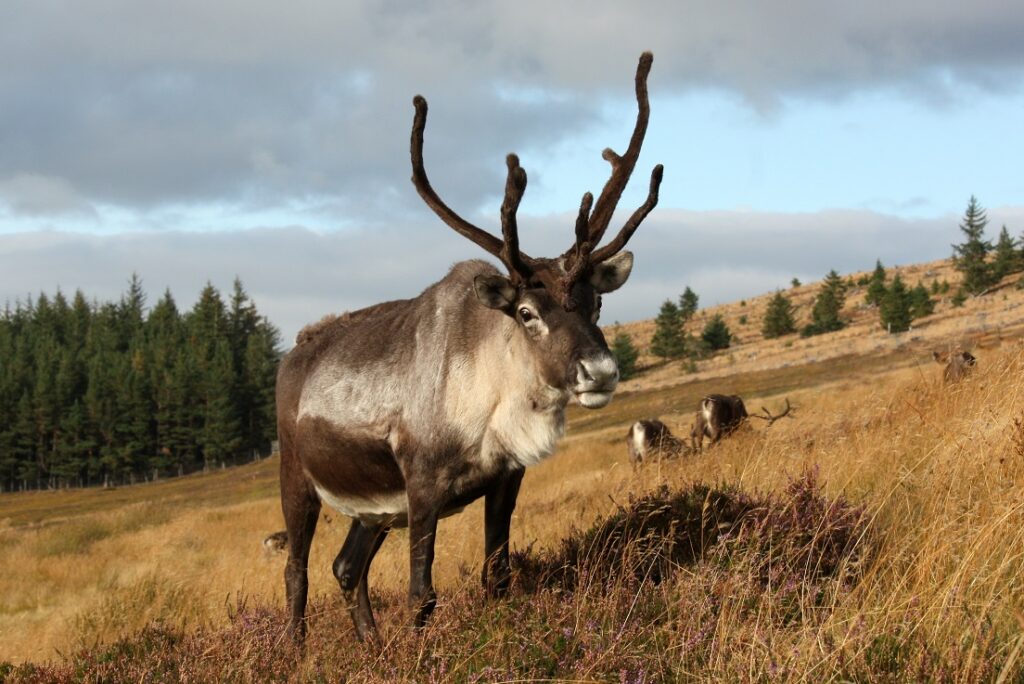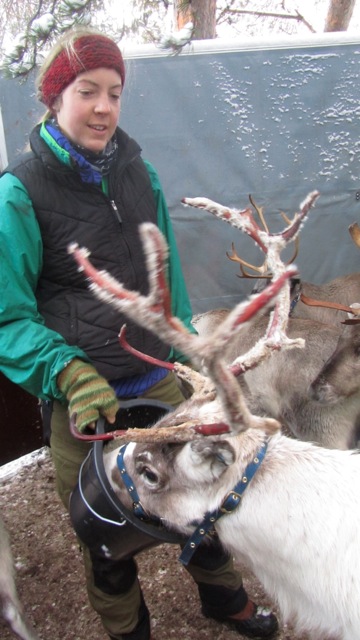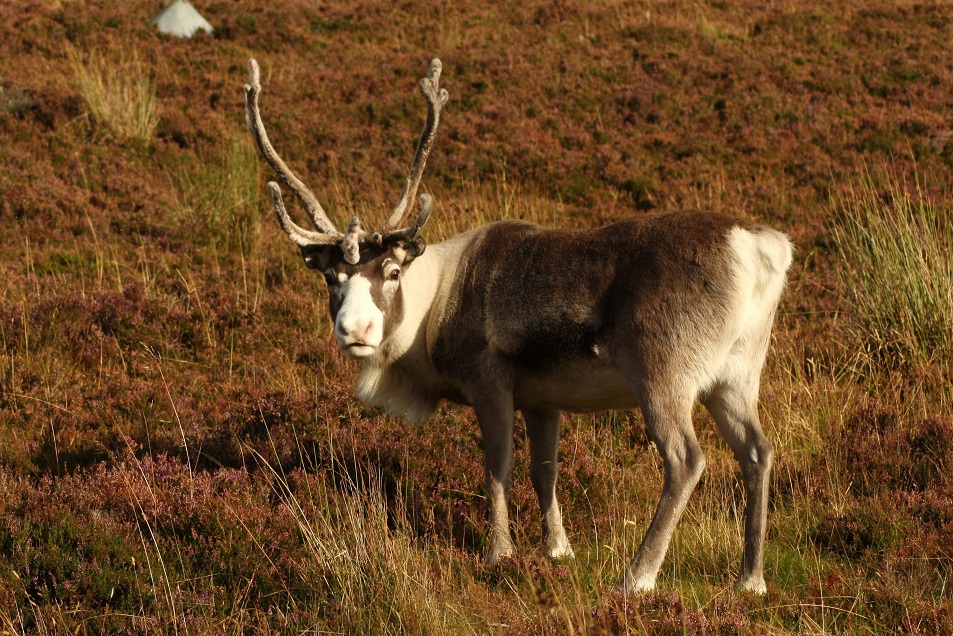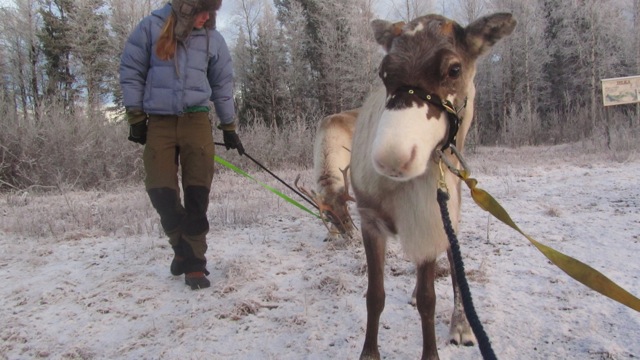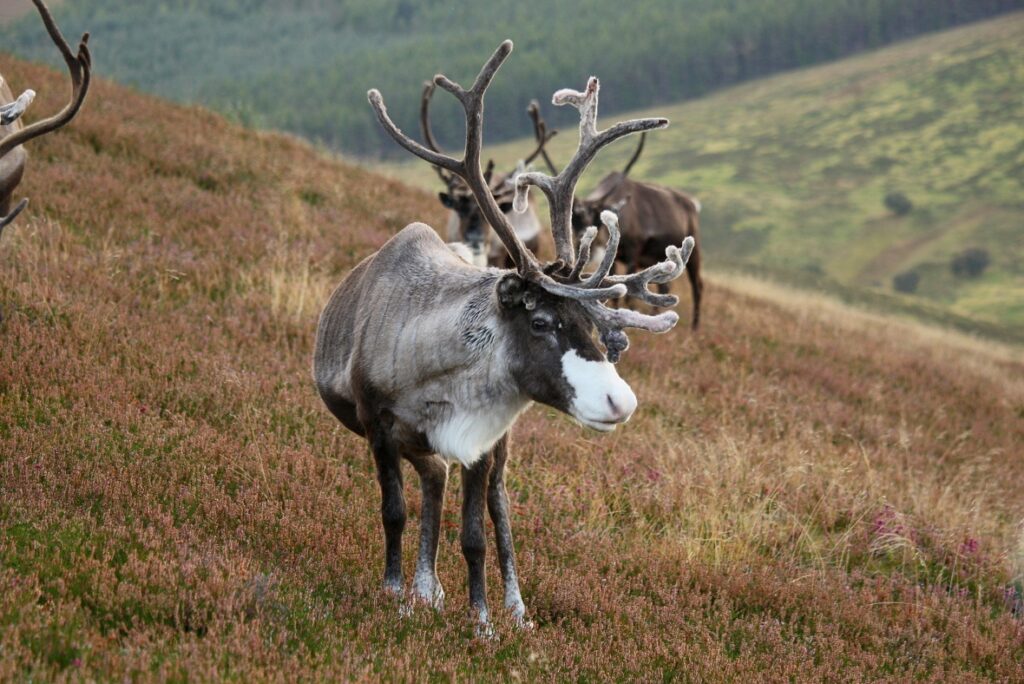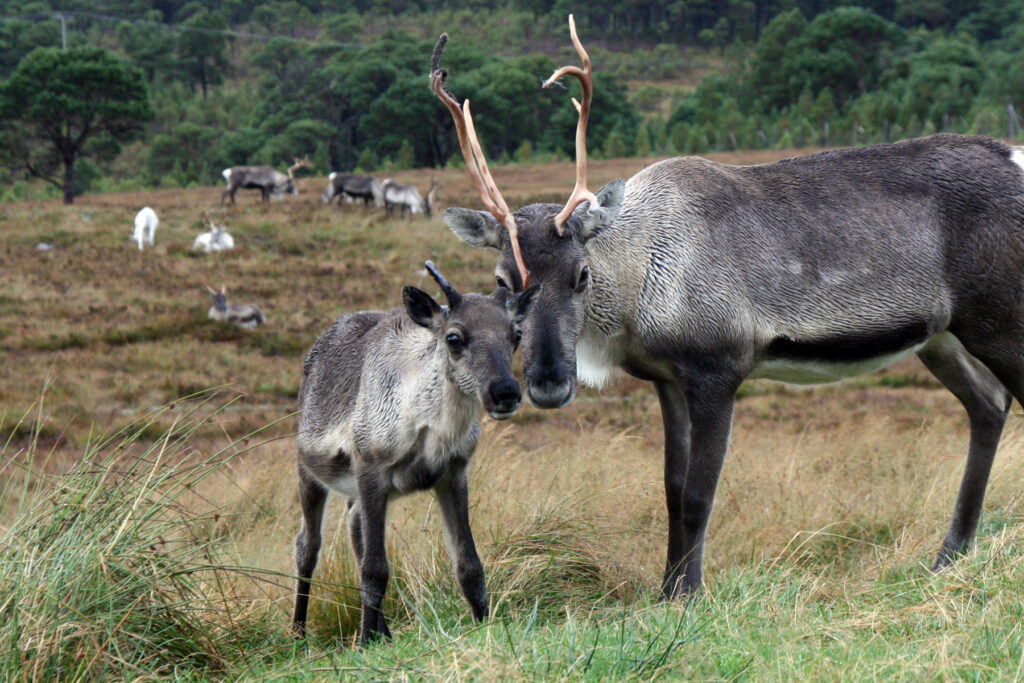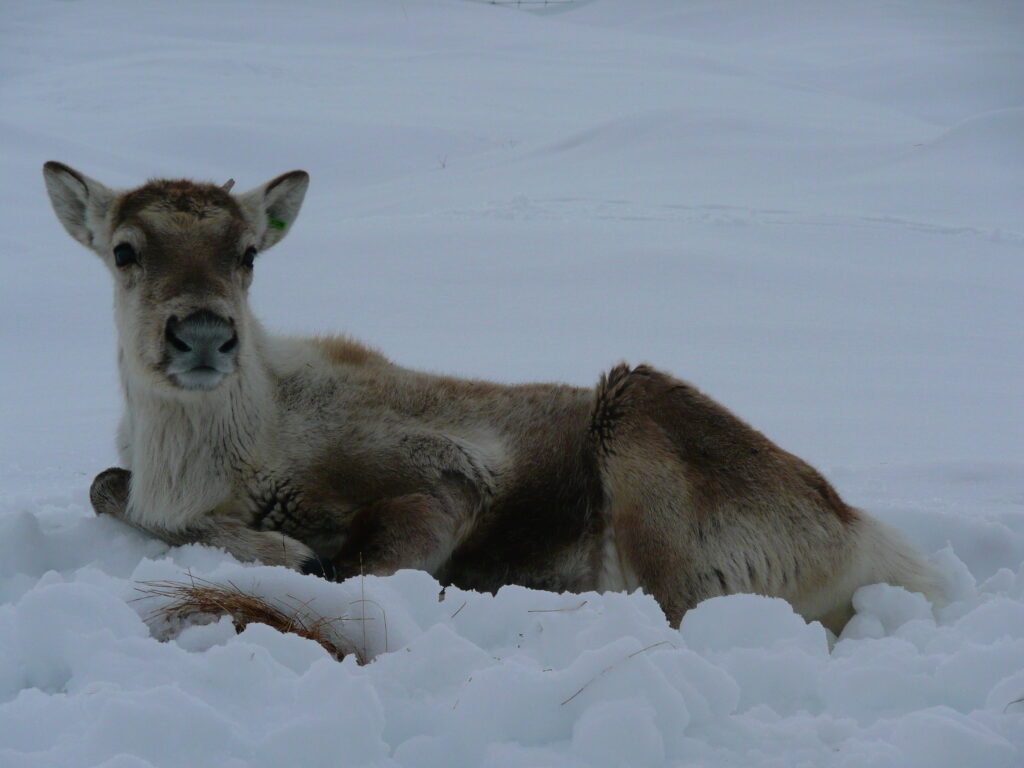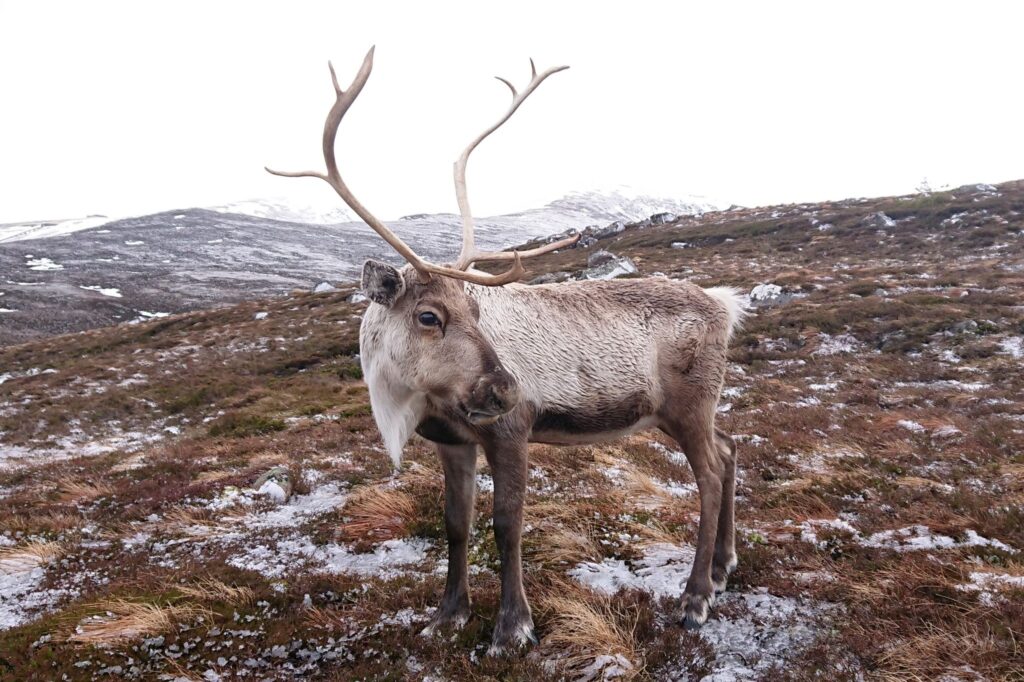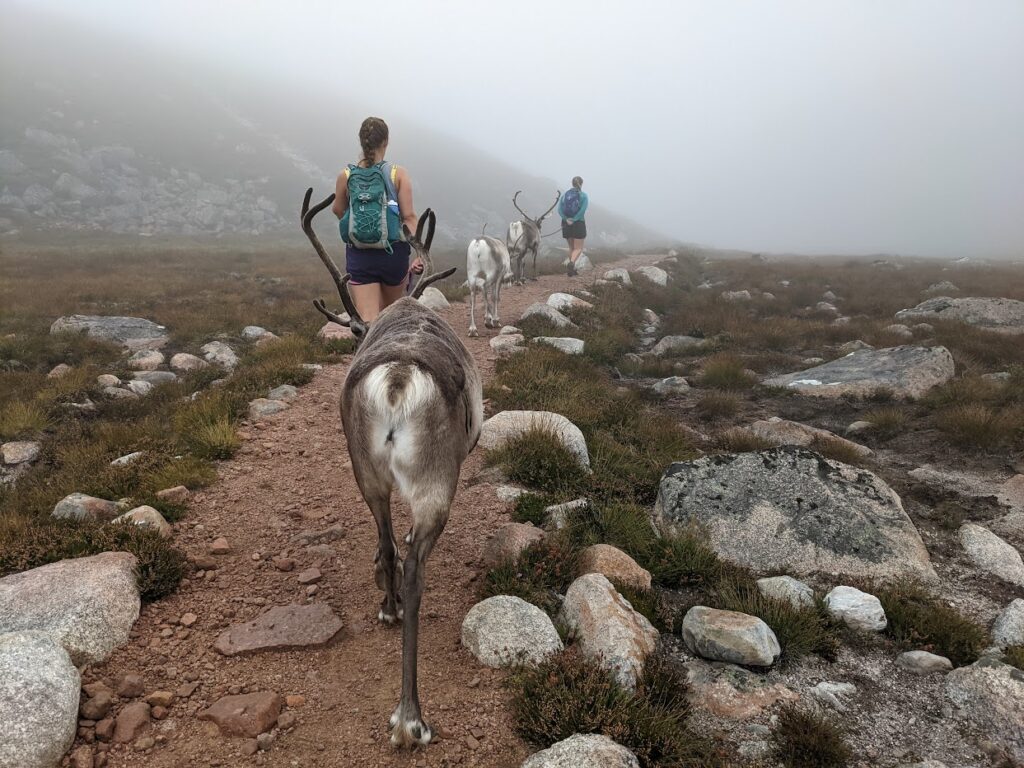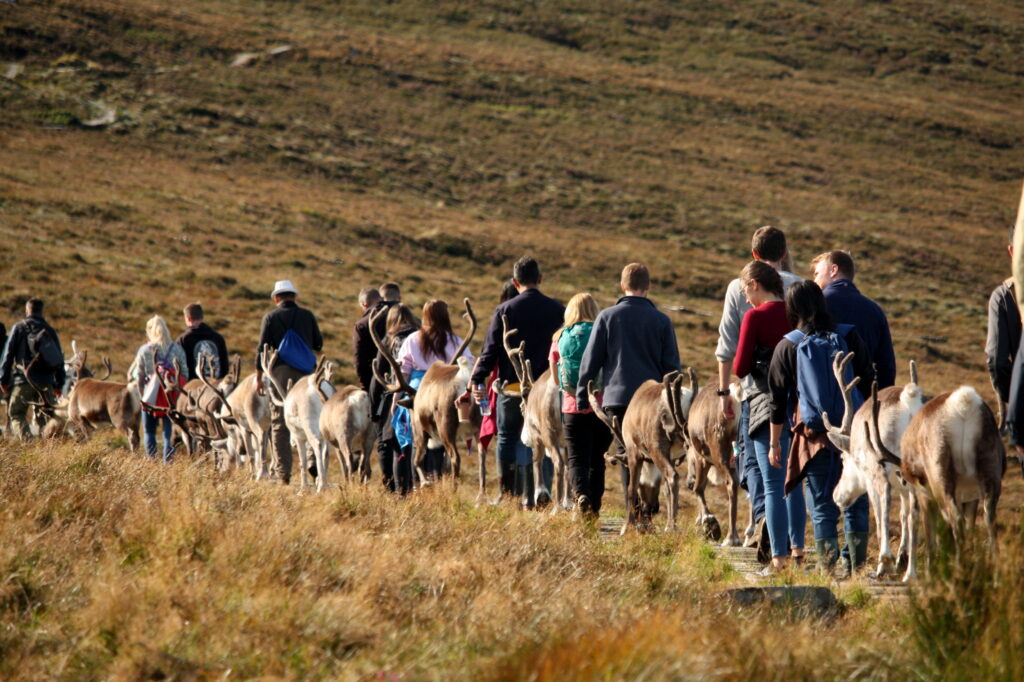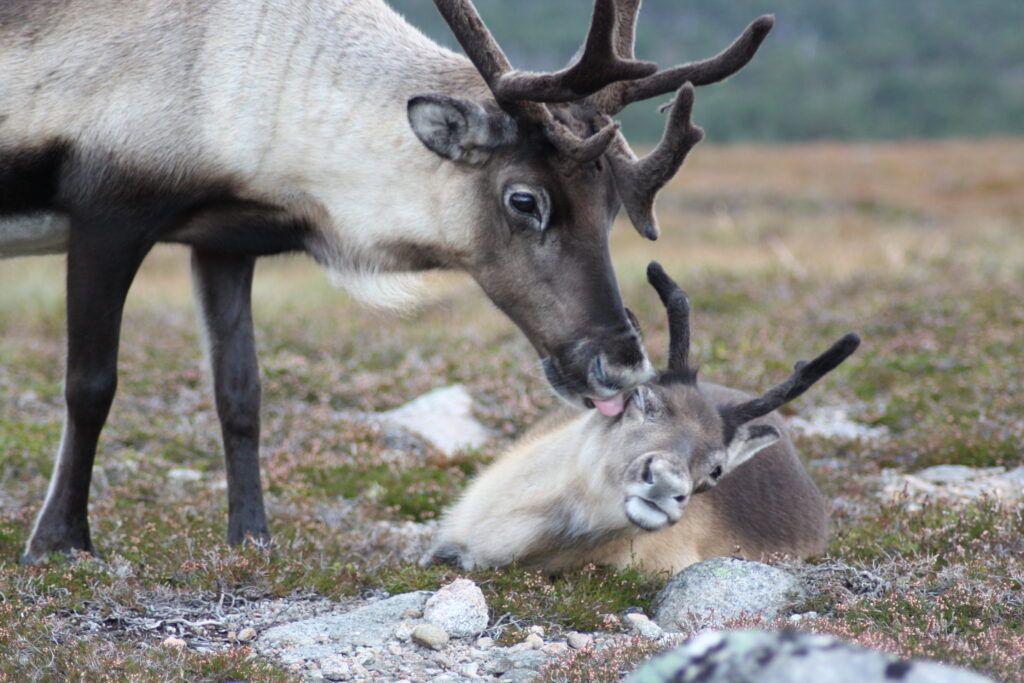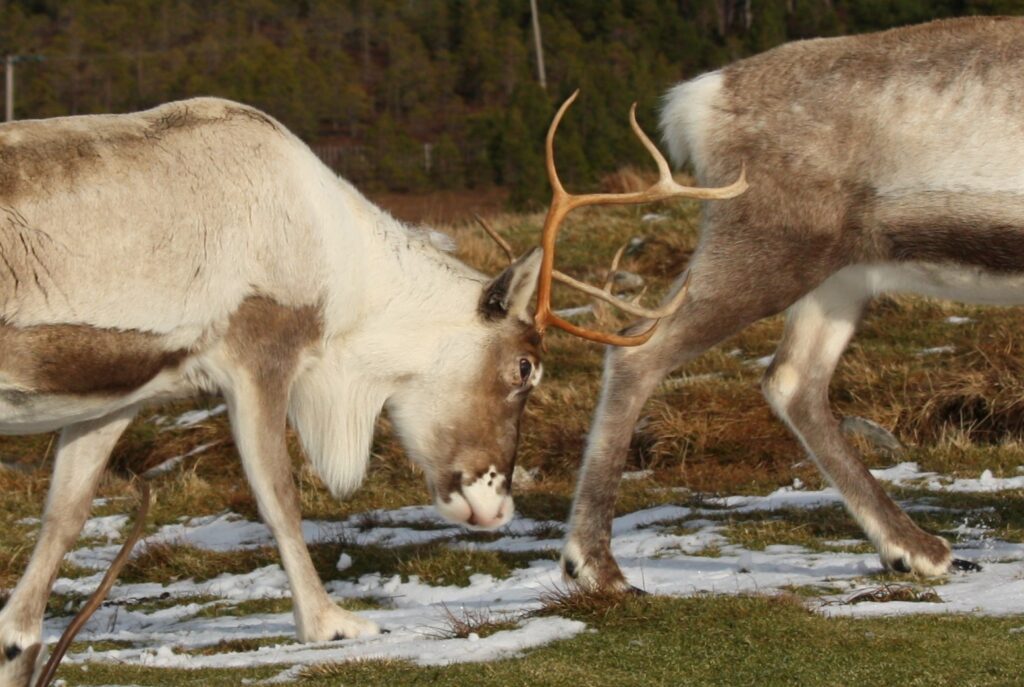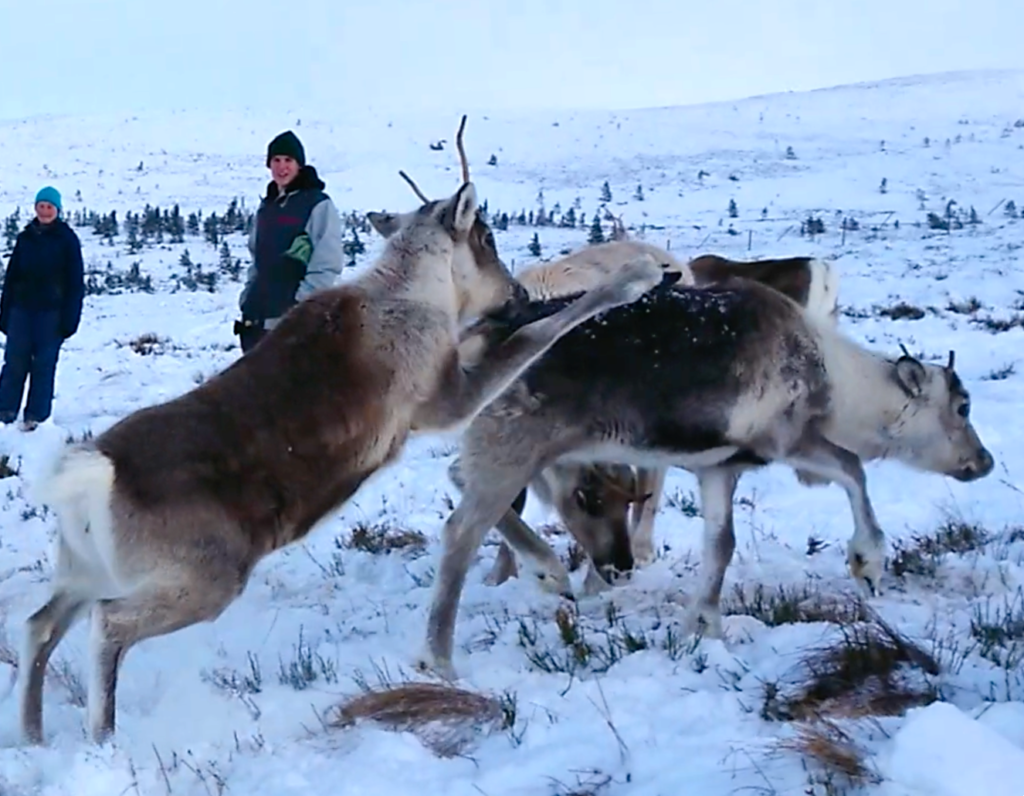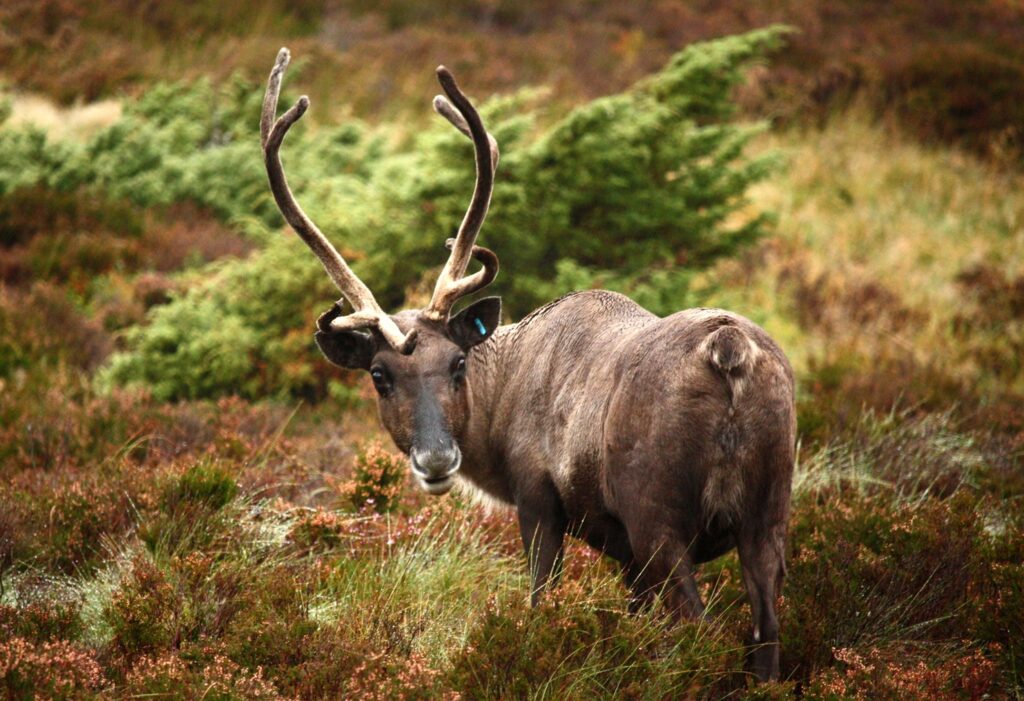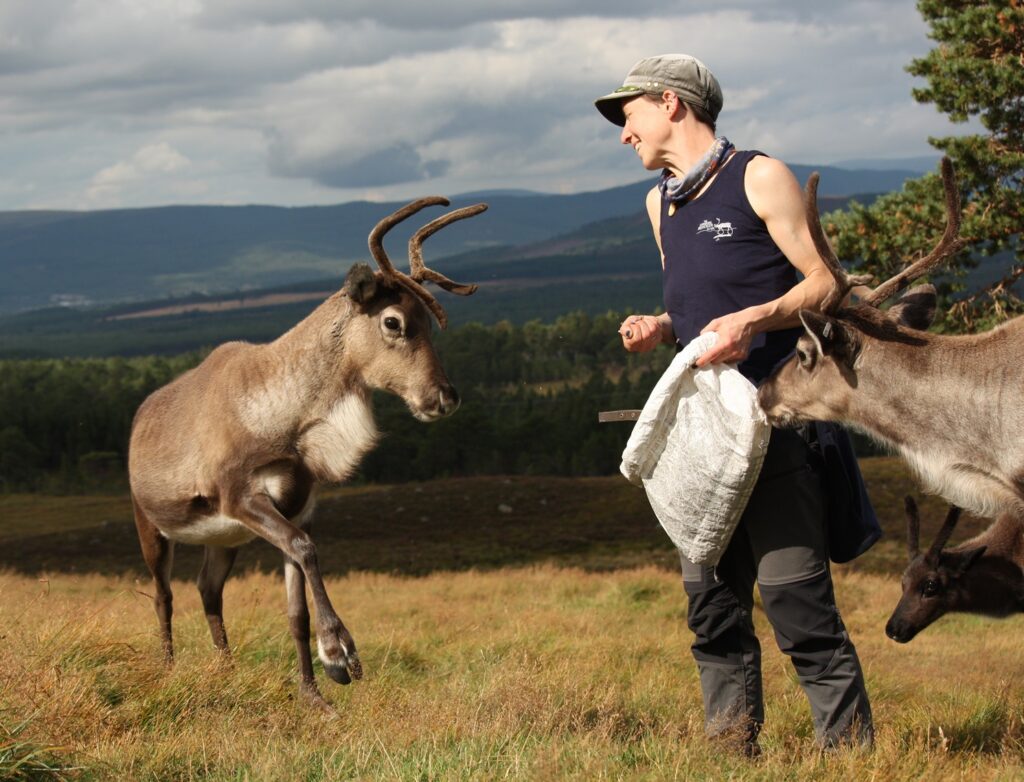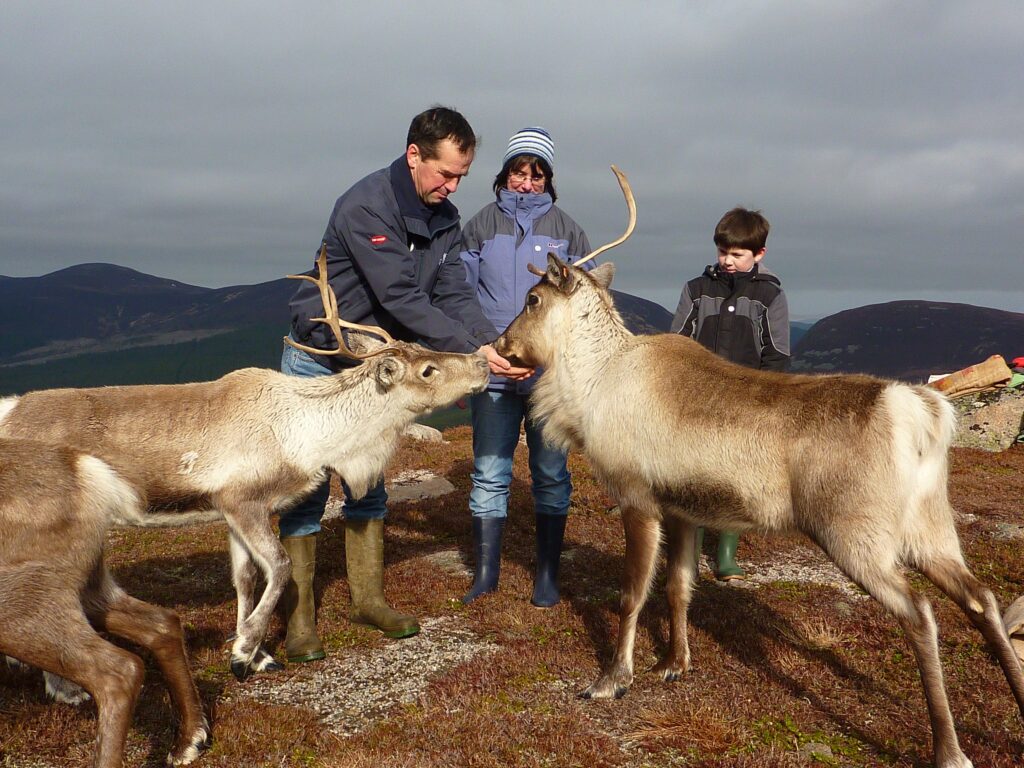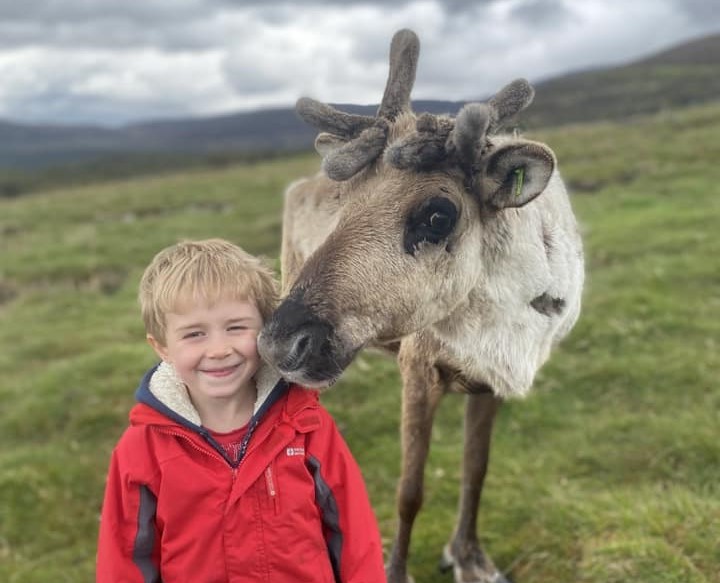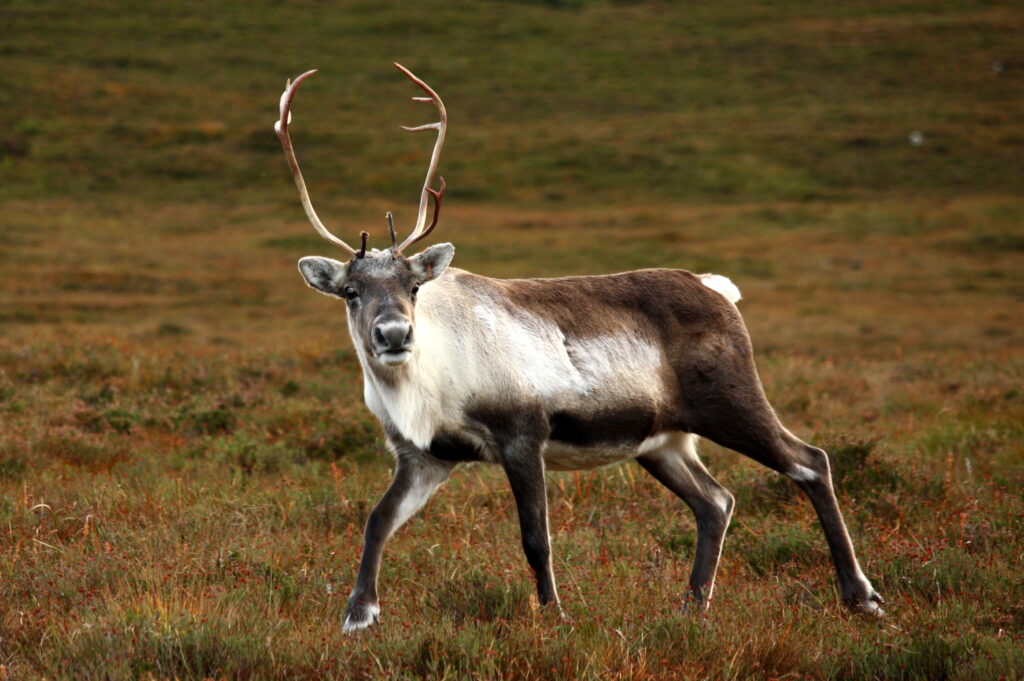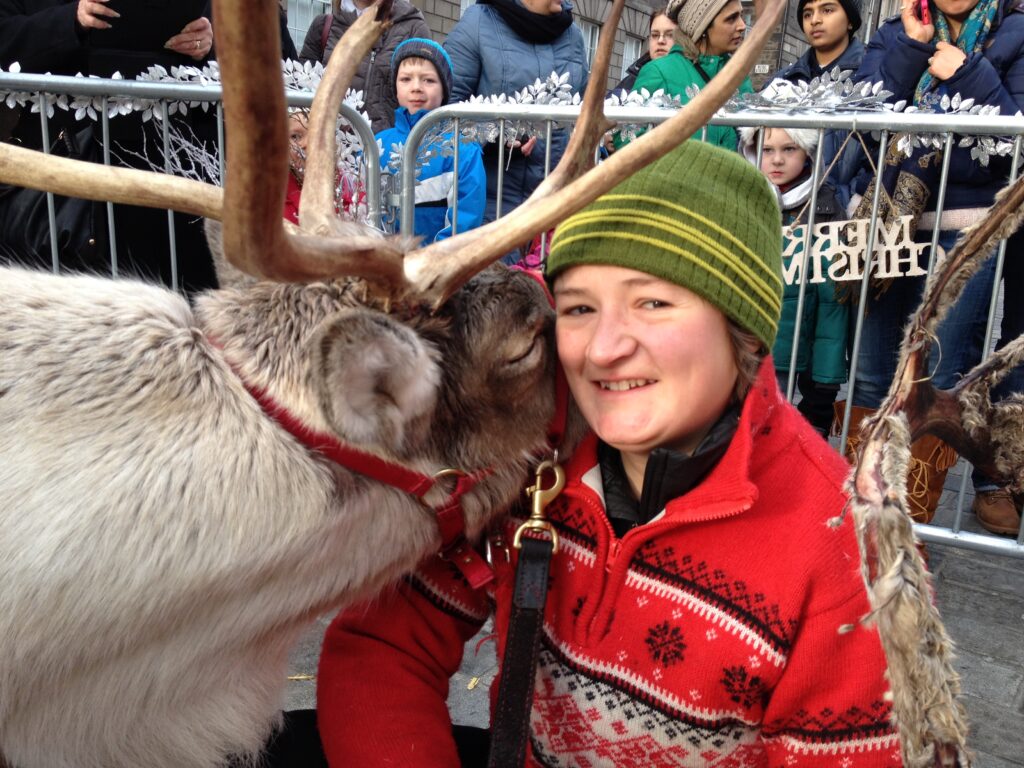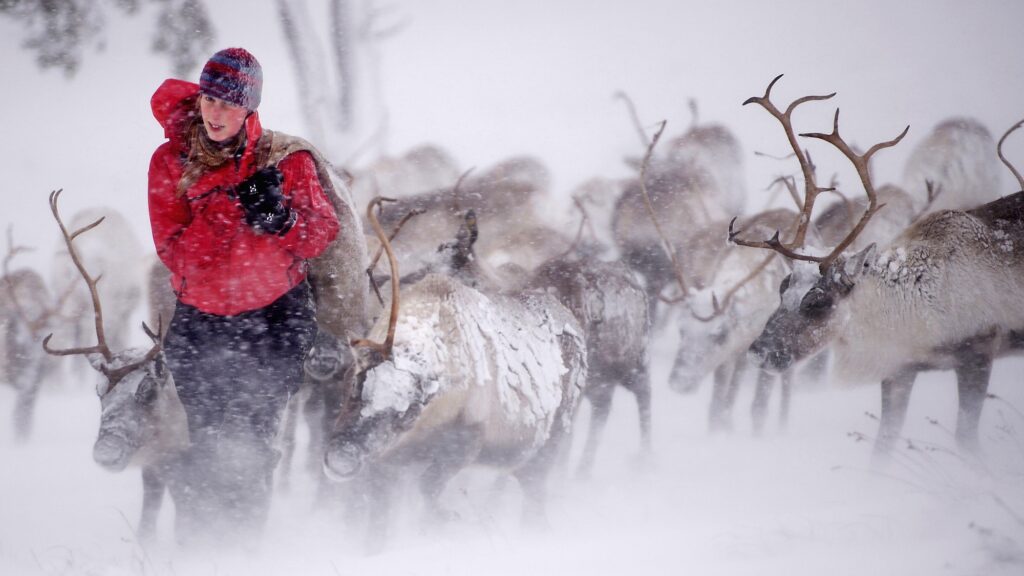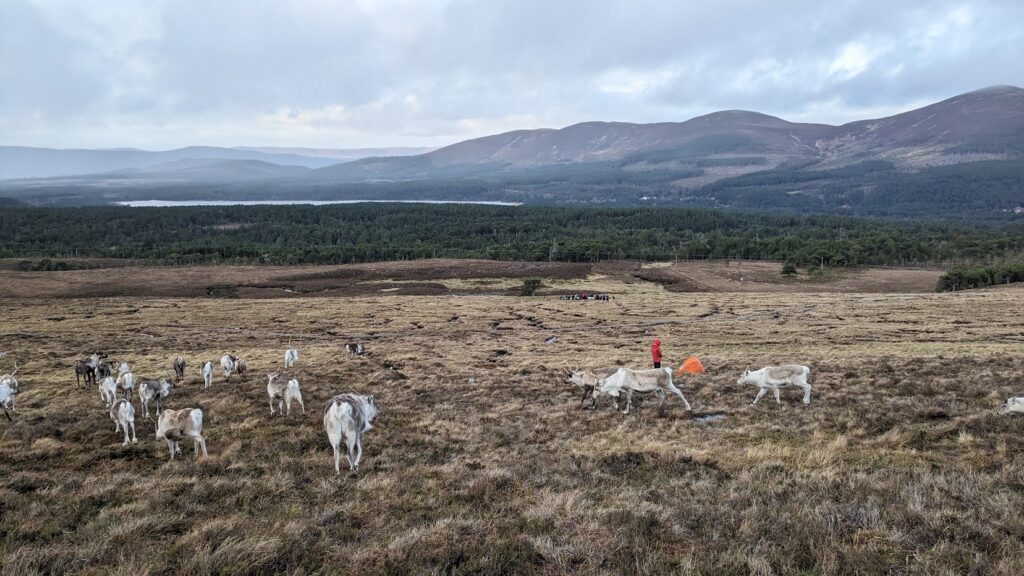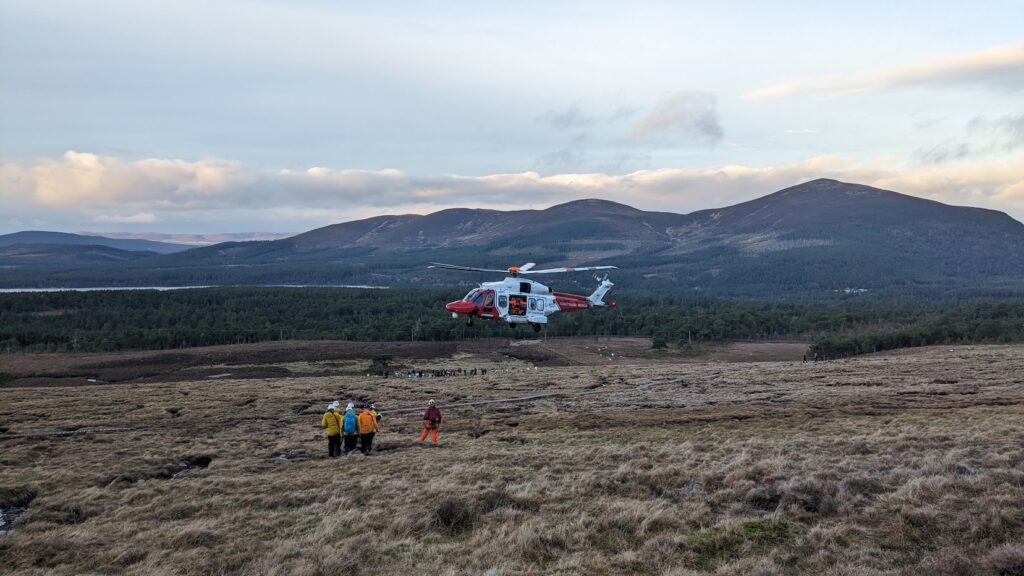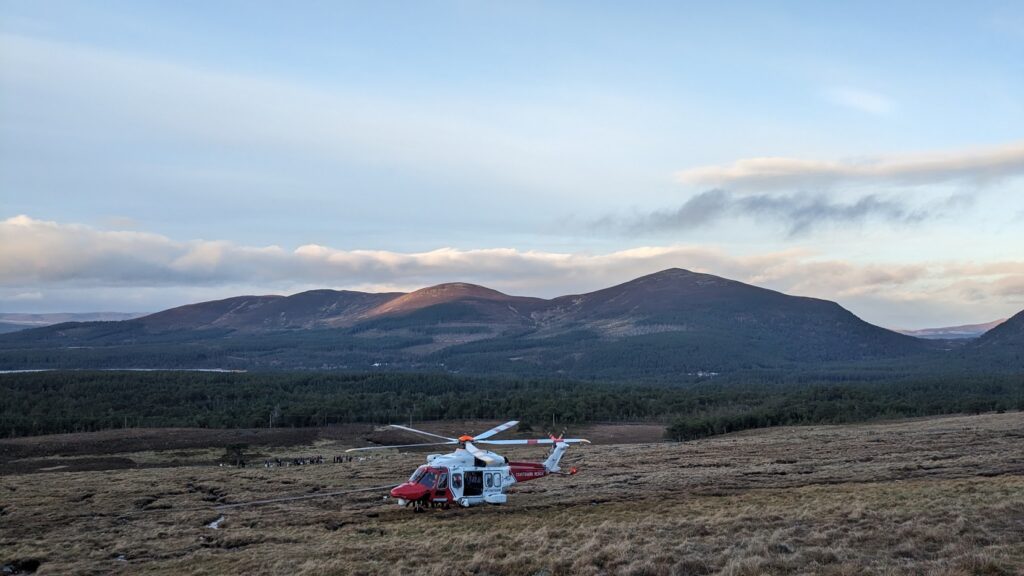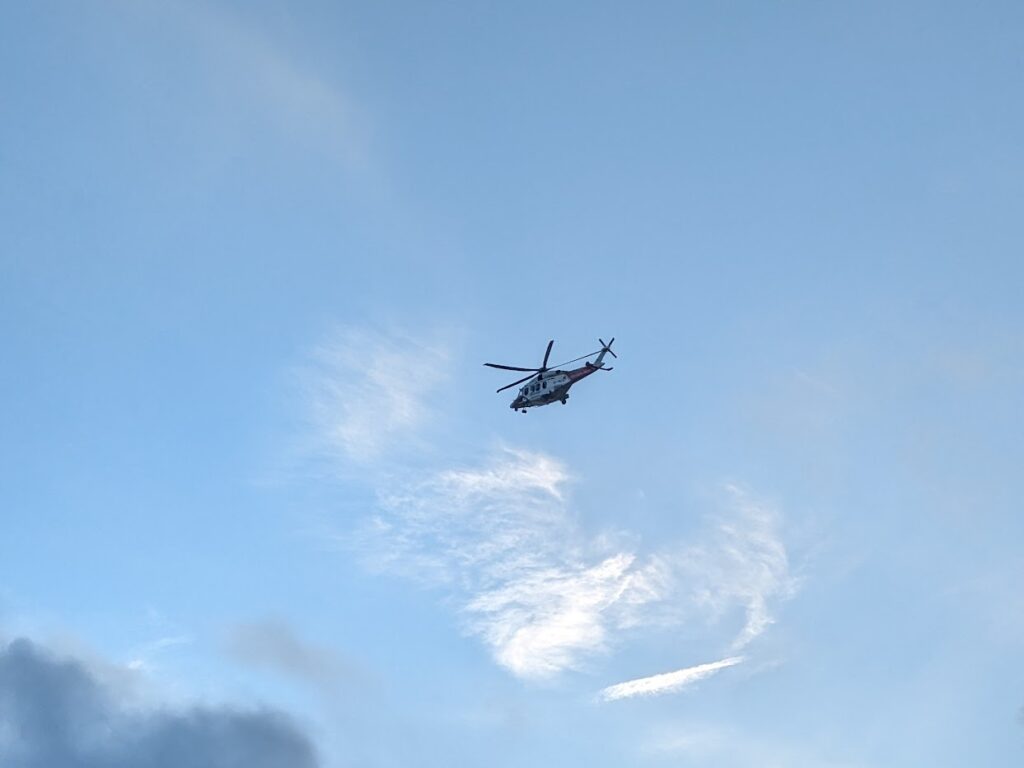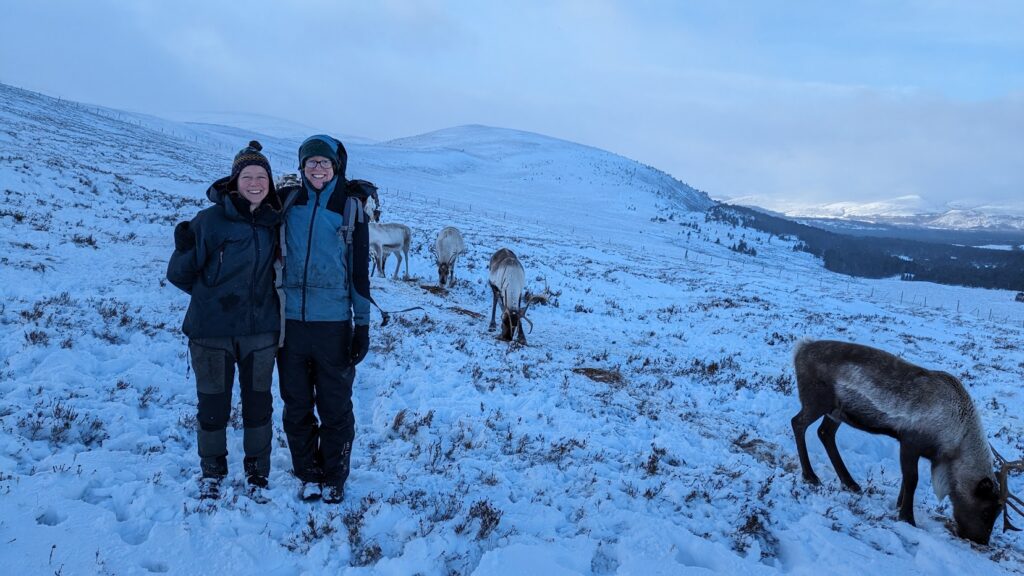
On my first day I headed up to the hill enclosure with Ben and was very excited to see the reindeer again, our last trip being in December the previous year. We checked the herd and found that Torch was missing, not coming down for breakfast, so Ben went off to find and check on her. I was straight away given the job to lead the visitors down to the visit spot and do a talk on reindeer adaptations to the extreme weather conditions. The visitors were very interested in how they are so well adapted for the snow and cold weather, right from the antlers down to the hooves, and asked me lots of questions. I really enjoyed sharing the knowledge with people. Ben got Torch in and after the visitors had gone we checked her temperature which was fine!

Some of the Hill Trips were to the free-range on Cairngorm and it was lovely to see them in their natural environment, hear and see the red grouse as well as the funicular railway and it was well worth the 40-minute walk sometimes needed to catch up with the herd. The conditions could be very severe up on the free-range and on one Hill Trip it was so windy I had to fight to not get blown over. I had never seen it like that before. When on the free-range herders would need to go up first and find out where they were and bring them down to a suitable spot for the visitors. They could be anywhere and on my trip with Ruth and Fiona when we went to find them we would try to call them down but often they refused to move and had to be fetched down. This would involve some trekking across rough ground and on one occasion involved jumping over a burn. Thankfully I didn’t fall in! I went with Fiona on one morning to find them and walked up very high as they were well up on the mountain. There were snow patches in some parts which were knee deep. When we found them they wouldn’t come down to our calling so Fiona went to the front and started to lead them down and I was at the back to herd them from behind. Suddenly a dog appeared off the lead and ran at Fiona and the reindeer near the front and the reindeer turned and started to run back towards me being very scared of the dog. I managed to stay calm and they all stopped and we waited for Fiona to come back up after making sure the dog was back on a lead. We then put Hopscotch on a head collar and Fiona led them down with me pushing from the back but the reindeer had different ideas and went their own way and I lost sight of Fiona. She eventually appeared from the side so we had walked past her with the reindeer doing their own thing. Fiona had thought they had run off but thankfully they had behaved themselves for me and stayed together. When we got to the visit spot we counted them all and they were all there. I got the reindeer special badge for getting the reindeer calm when they were spooked and for keeping the herd together. I was very proud of myself.


On another occasion with Hen and Cameron we did the free-range Hill Trip but when we got there we couldn’t see them so we had to go searching. We were getting desperate until eventually I looked over a ridge and saw them all lying down relaxing hiding from us. We were very relieved. I did notice how wild the weather could be at this time of year and it could change quickly. On one Hill Trip it was so snowy, sleety and windy that no children were allowed and we had to wear ski goggles to keep the snow out of our eyes. Some visitors were turned away if they did not have proper outdoor clothing suitable for the weather and I realised how important that was. Andi escorted the visitors that day guiding them up and back on the main path because of the weather.

One day we had to move some reindeer around. Dante, Glacier, Marple, Vienetta, Vienna and Kulfi all came off the free-range. Vienna and Kulfi went to join some others in the Paddocks and the others went into the hill enclosure. To move them we put head-collars on and lead them. It was interesting to see when we put them into the hill enclosure with the others there was a lot of charging around, rearing up with front hooves and clashing of antlers as they had not met for a while and were establishing the pecking order.

When not out on the hill there were lots of jobs to be done in the Paddocks such as poo-picking, take Paddock reindeer temperatures, feed mixing, scrubbed and cleaned fences in the Paddocks cleaning off bird poo and cobwebs mainly, putting up the pictures and information about the particular reindeer in the Paddocks at the time, answering questions from the visitors and putting the reindeer ‘to bed’ and closing up the Paddocks at the end of the day. There were a lot of things to be done for the adoptions and in the shop helping out with the new adoption forms, restocking the shop and putting Holy Moley cards into envelopes. I even hoovered which is something my mum says I never do at home!

As the pregnant reindeer were due to calve in the next month or so the herders have a calving bet when all the herders choose who they think will calve first. The loser is the one who reindeer calves last and they have to do a forfeit which is chosen by the herders. It used to be that they had to take a swim in the loch but now most of the herders actually do this for fun so they have to decide another forfeit! I was able to make my choice and thankfully I didn’t lose this year. On Easter Sunday there were chocolate eggs all round Reindeer House and the electric van after Easter Bunny’s visit and we enjoyed looking for them and of course eating them. A few days later Joe did a photoshoot for the Cairngorm Mountain Rescue team for the money raised from the naked calendar which was over £4,500. He did a photo with his clothes off handing over the cheque which was very funny although we kept well away!
On our Hill Trips the calves born in May 2022 were given preferential feeding and are given first go at the special mix from the food sack so we had to keep off the bigger greedy reindeer to let the calves feed. On the Hill Trips there are a number of talks; the introduction, history, health and safety, hand-feed as well as the reindeer adaptations and the herders let me do these at times during my visit which was very special to be given the responsibility. Many of the visitors asked us to take photos of them with the reindeer and I enjoyed this and met some lovely people from all over the world.
From time to time there was a trip to Tilly’s farm to collect grain, barley and lichen to bring back for the herd. I did the trip with Sheena one day. When over there we helped Tilly out with the farm animals. We put some barley in the trailer for the red deer and it was pulled behind the quad bike driven by Tilly and we followed. The red deer came running down when they saw us for their food. We all then went on the quad bike to the reindeer to check temperatures and any with high temperatures had an injection. I helped catch them and put the head collars on to hold them. I was also able to spend time chilling with them and take my own photos. I caught up with Sunny the hand-reared reindeer as well as Elvis the oldest in the herd at the time aged 17 years who were at the farm. I also saw twin one-day old lambs from the Soay sheep and a two-week-old Belted Galloway calf. It was nice to have a cup of tea and kit-kat afterwards in Tilly’s farmhouse with the dogs Tuva and Moskki running round. Tilly was excited to share the new plans for the new Reindeer Centre which had been approved. Unfortunately we had a flat tyre on the way back and I helped Sheena change the tyre. I was able to award her the special badge as she did so well and saved the day and she was secretly proud of herself.

I really enjoy catching up with all the dogs who come and go from Reindeer House and this time got chance to go for a walk with Sheena and five dogs, two of Sheena’s and the rest from Reindeer House, after work one day. We went round the back of Reindeer House in the paths in the forest. The views were beautiful of Loch Morlich and the Cairngorms.

One last thing I had to do in April was to say goodbye to Sookie (a beloved Reindeer House dog) before we left as she was getting very old and poorly and we did not think she would be still with us when I came back in October. We heard a little while later that she had died which was very sad, she was buried in a beautiful spot which was one of her favourite places.

Emm























